Hello and welcome to another week of Tinto Maps Feedback, in which we will take a look at China!
This area has received quite a bit of changes, although the locations themselves have not been touched that much. One change that we still have in the plans to do is to update all location names to use the names of the counties instead of the county seats, as, after the feedback we received, we agree that this is the best way to name locations in China. However, it’s a long list of names that we have to check and change, so it will take a while to do it all. To that effect, we would appreciate any help you can give us by providing lists of the current names of locations and the county name they should use instead. We are aware that there were already many suggestions for name changes in the first Tinto Maps, and we have them already bookmarked, but any further suggestions and feedback will be equally appreciated, and even more if ‘compilations’ of county names by provinces/areas are made.
Now, let’s look at what has changed:
Countries:
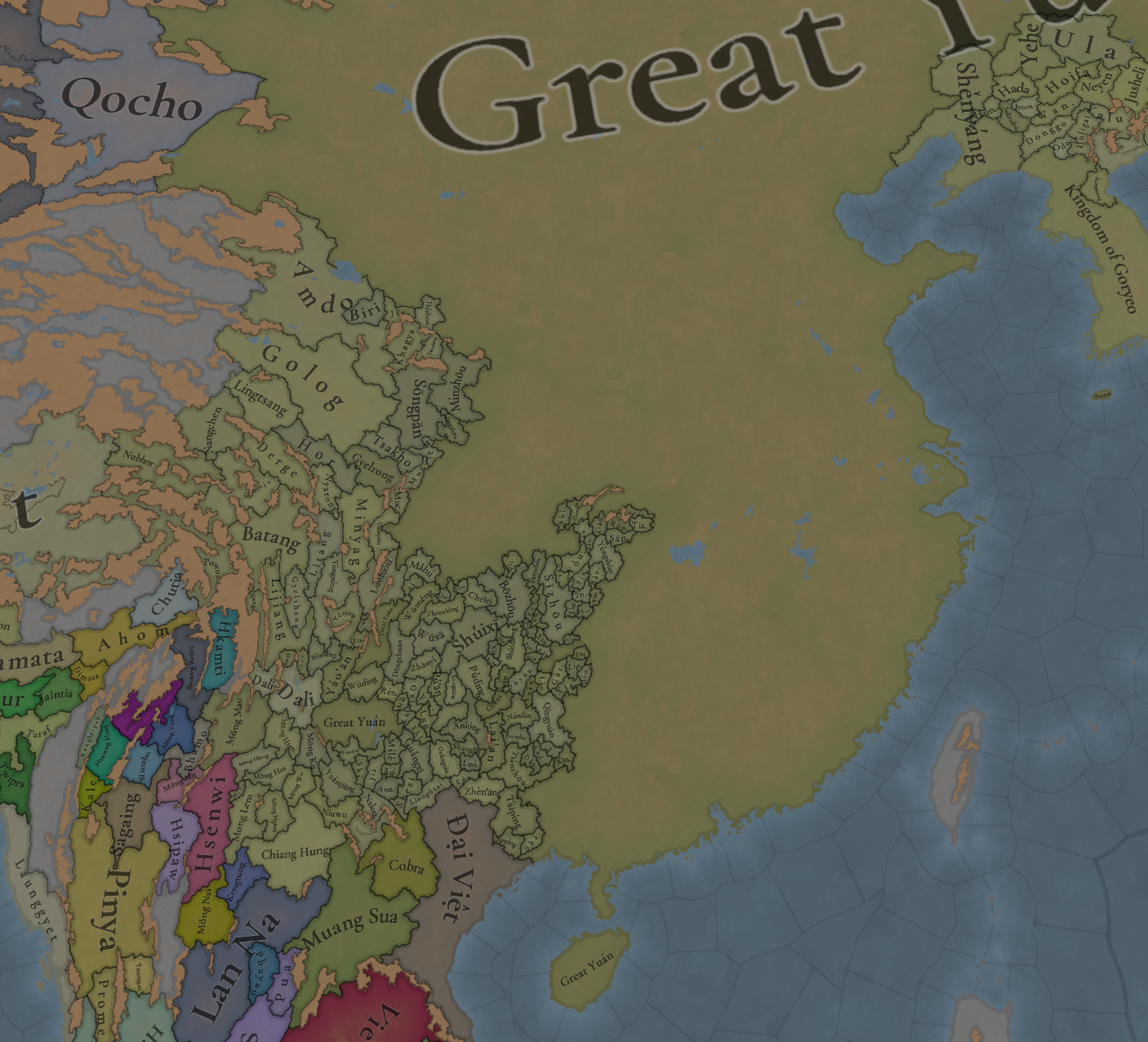
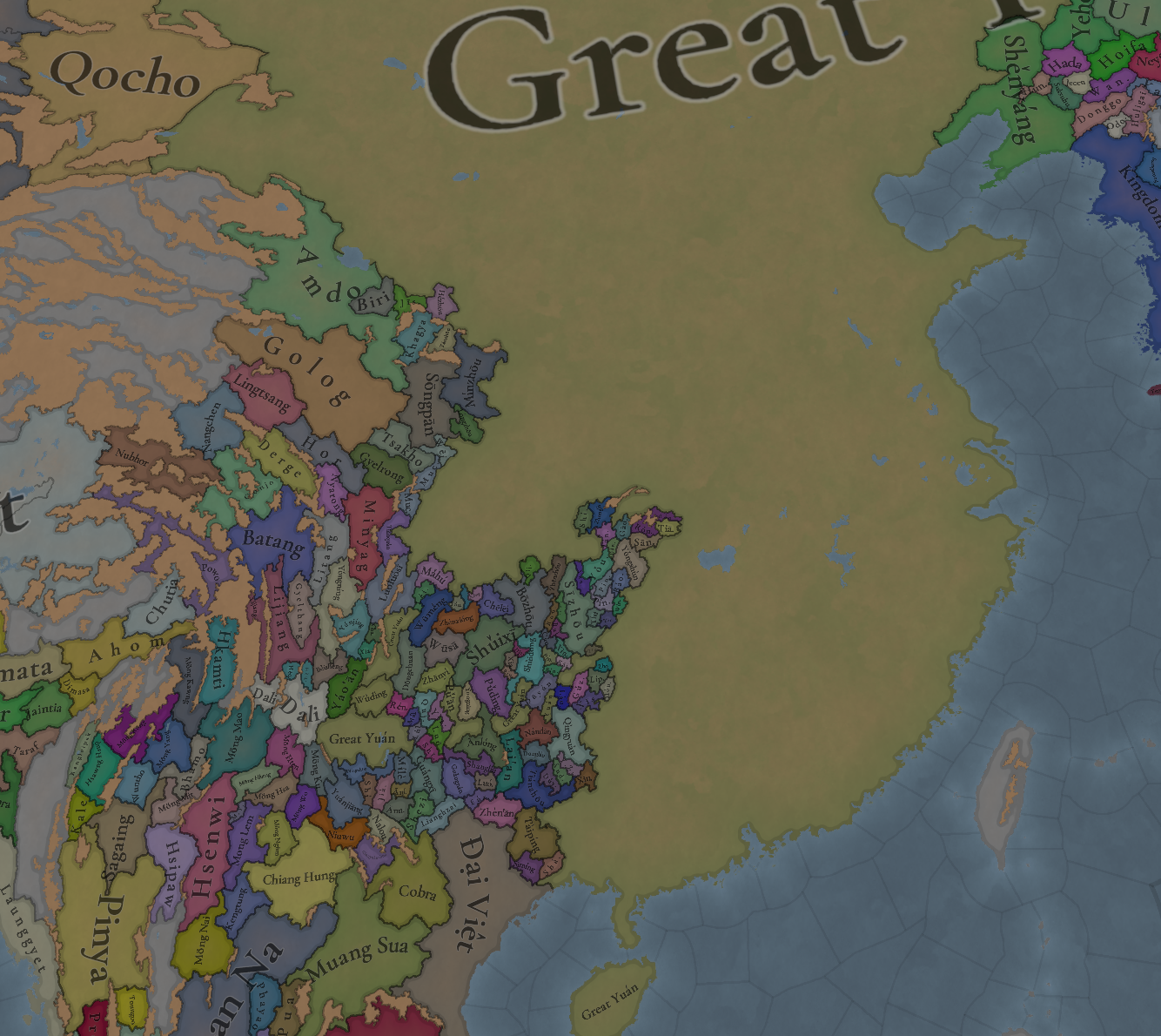
Quite a lot more to see here compared to the previous iteration. As you can see, we have added the Tusi states, which is a new type of subject, in the border towards Yunnan.
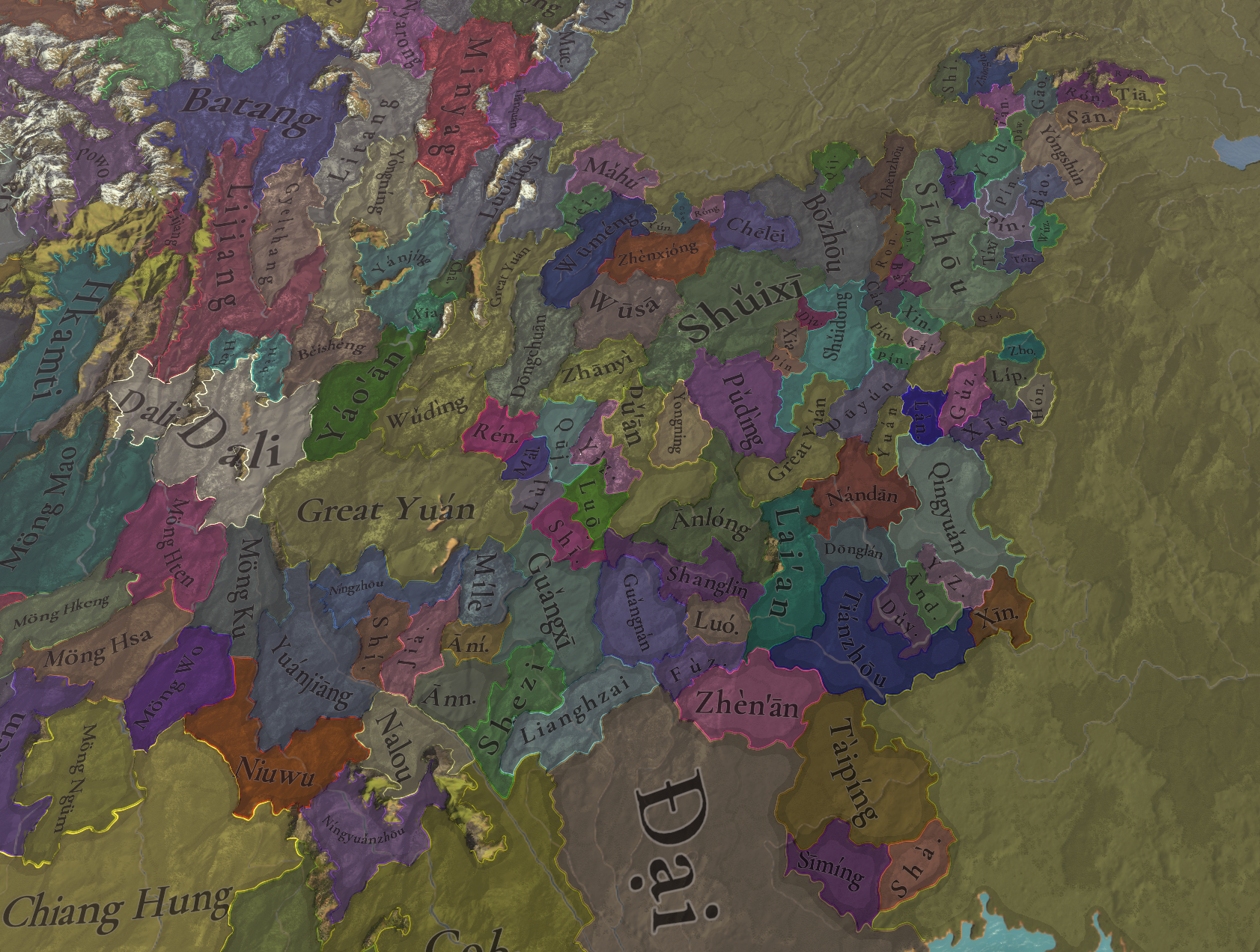
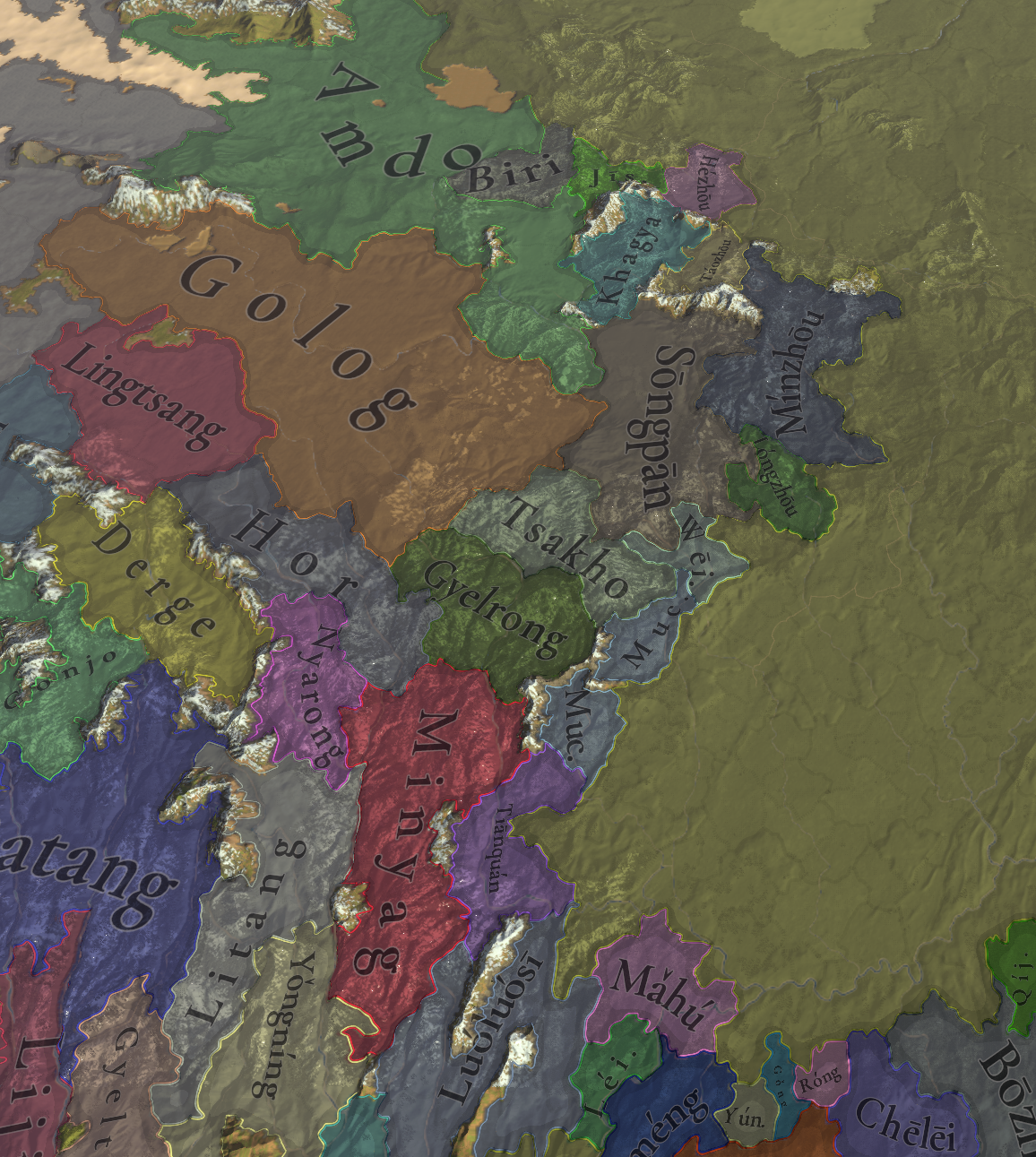
Dynasties:
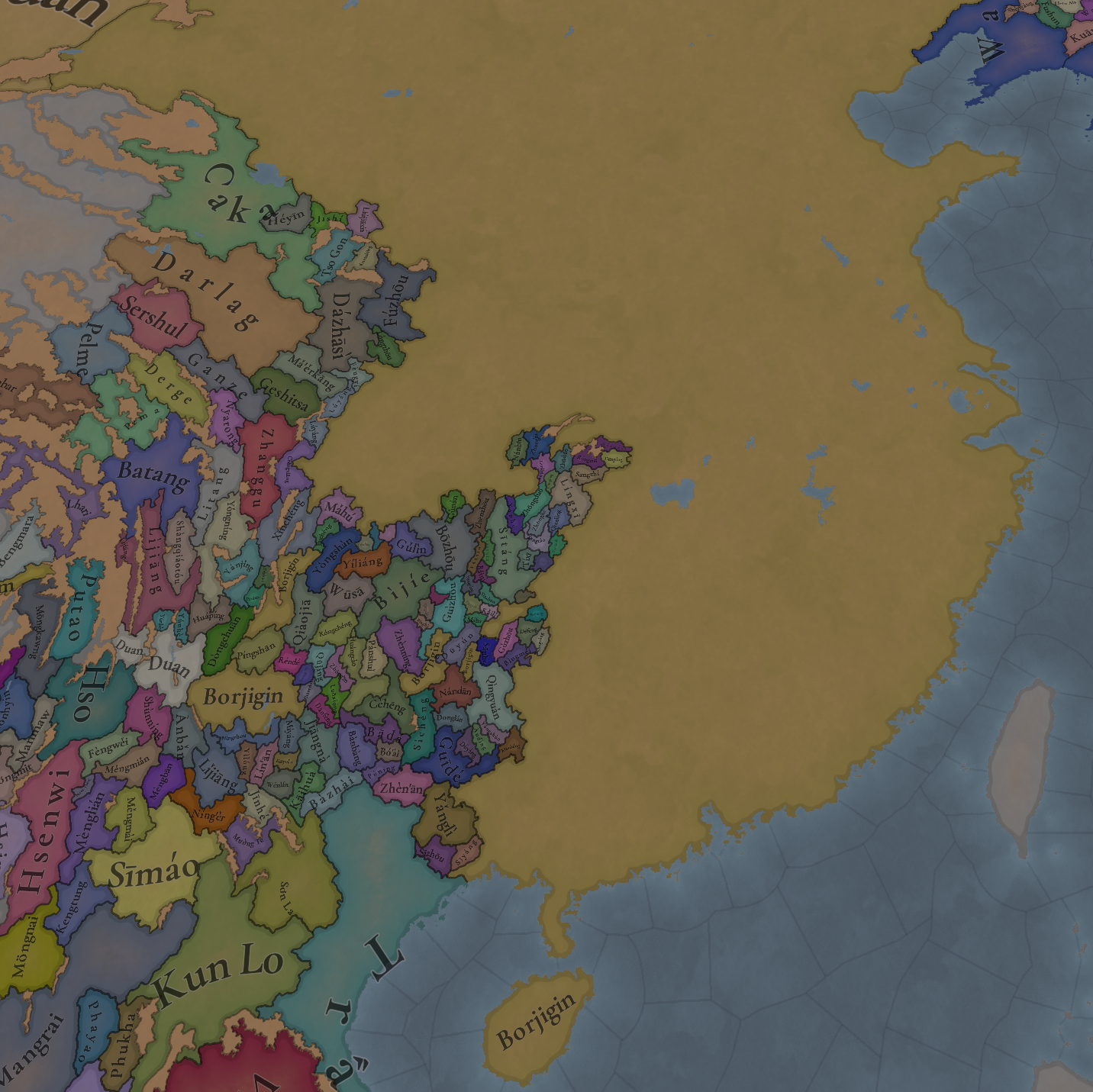
Societies of Pops:
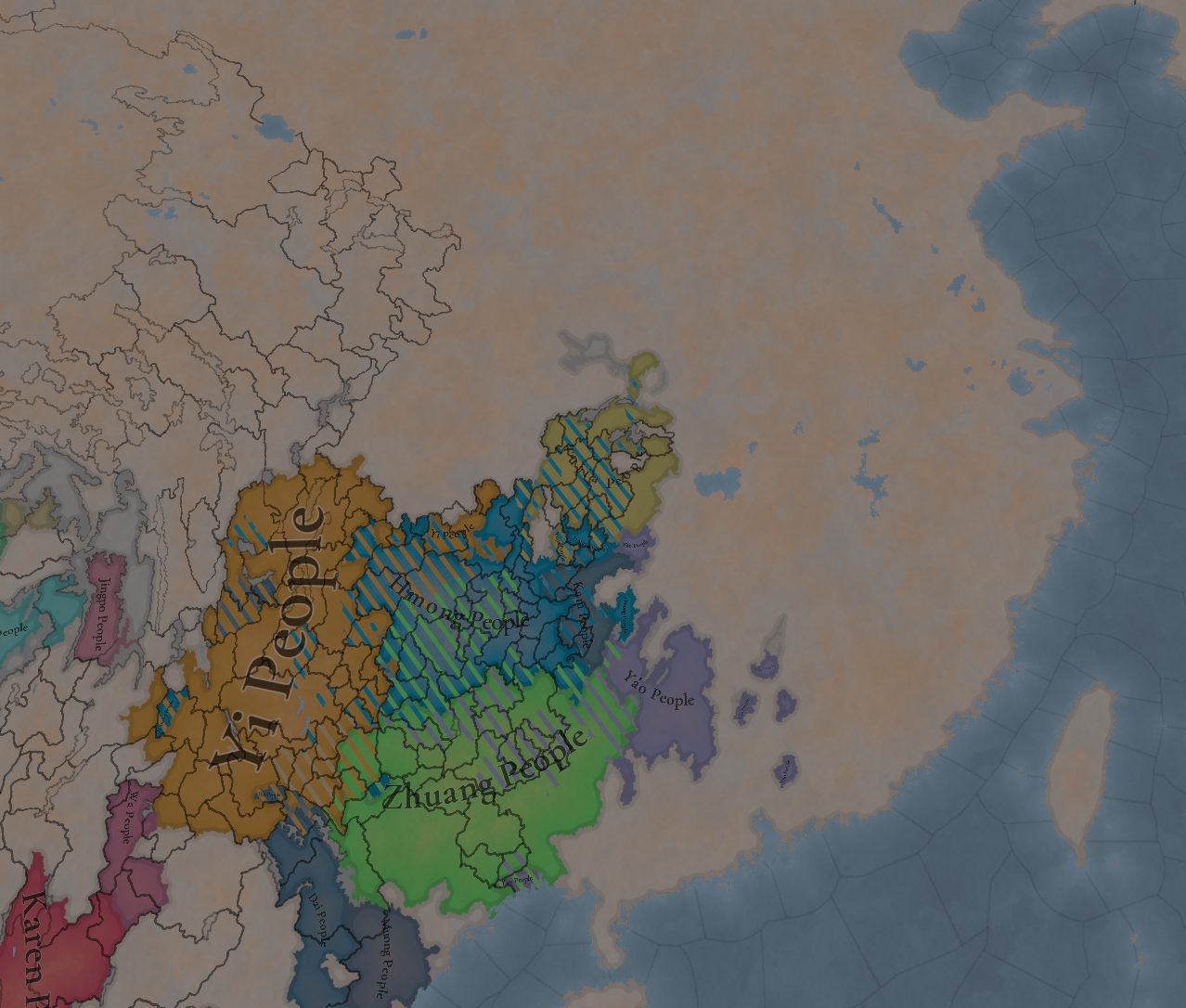
Country ranks and Government Types:
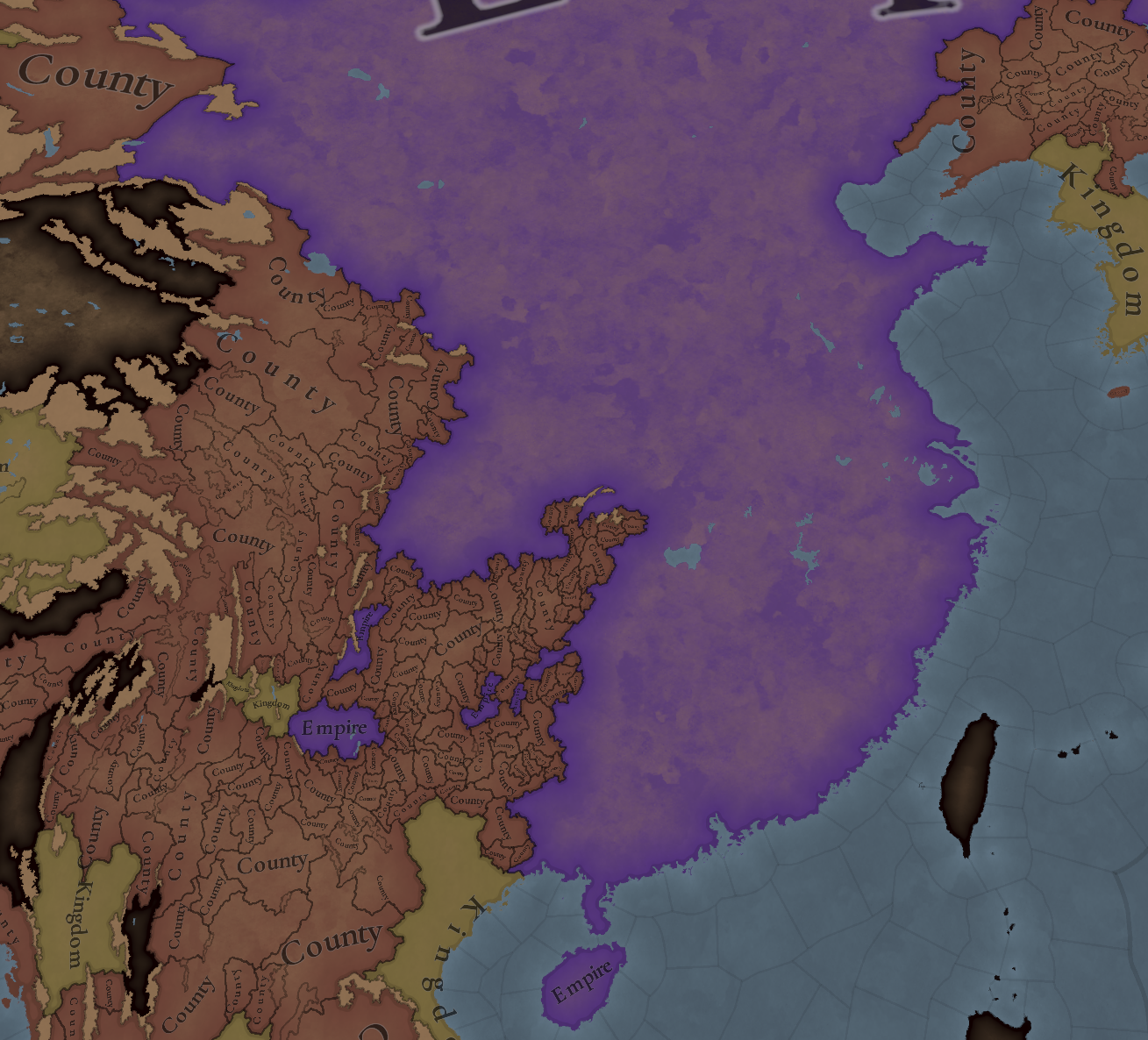
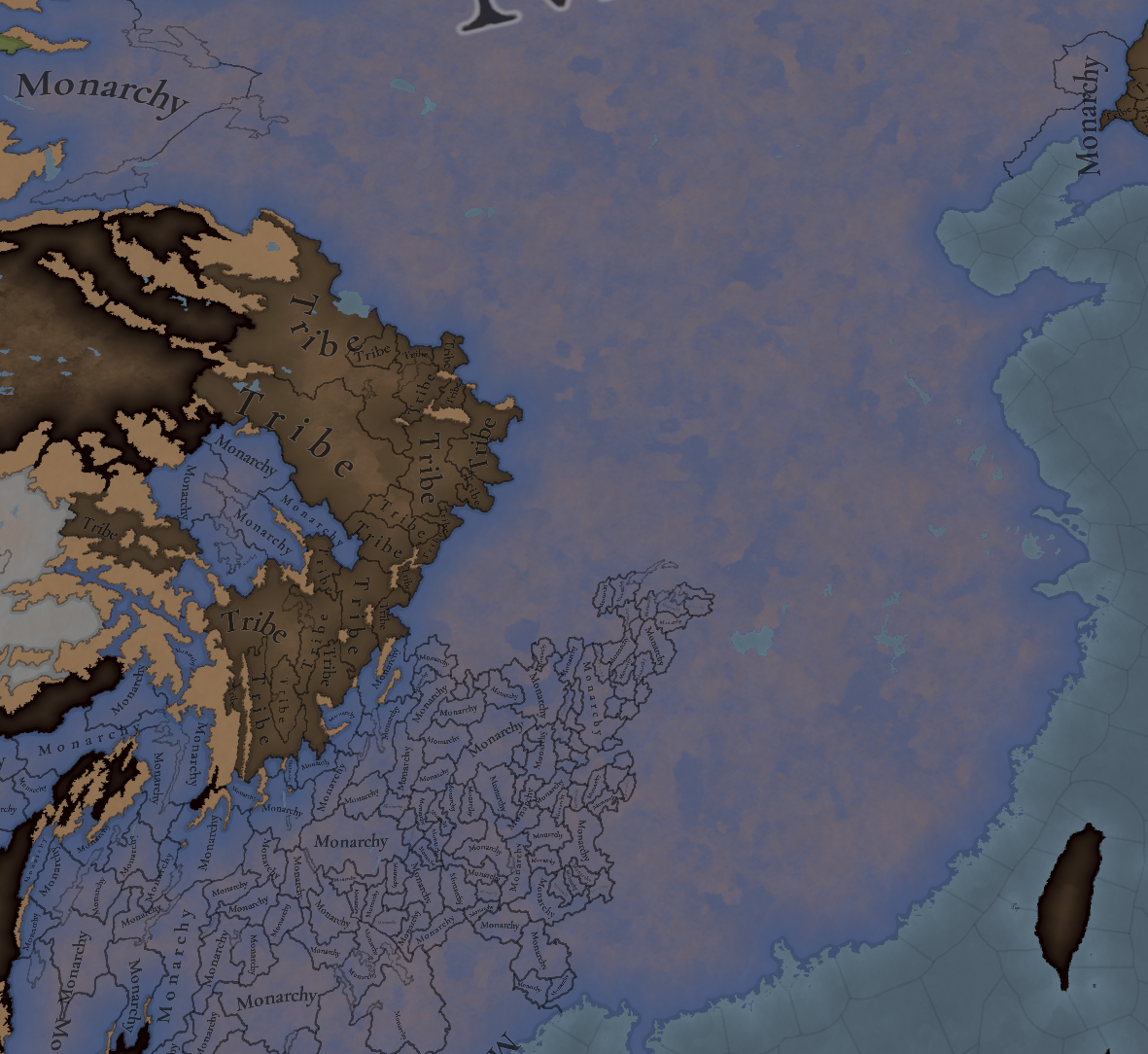
Locations
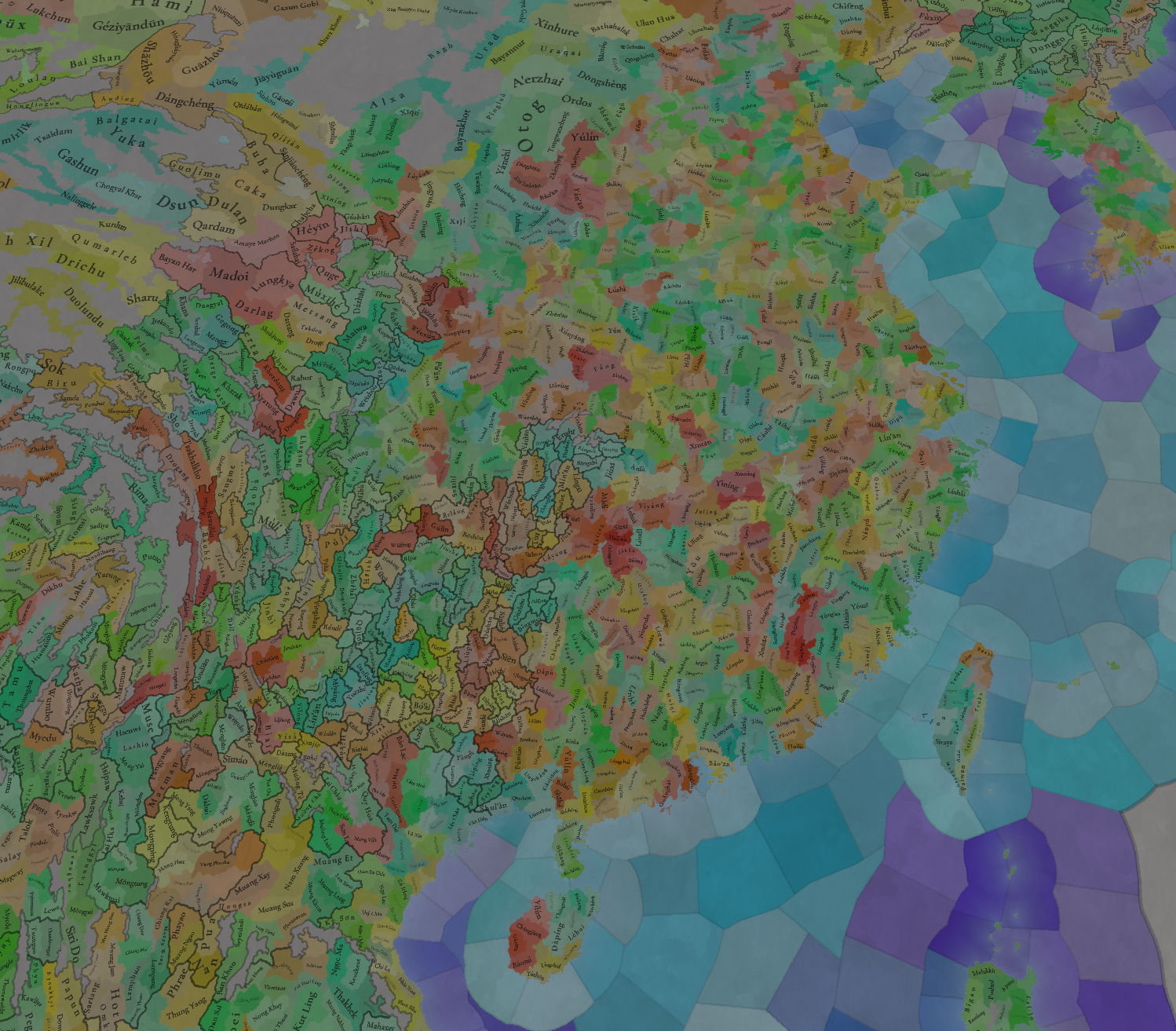
As I said, not much substantial changes here, but some small touches here and there.
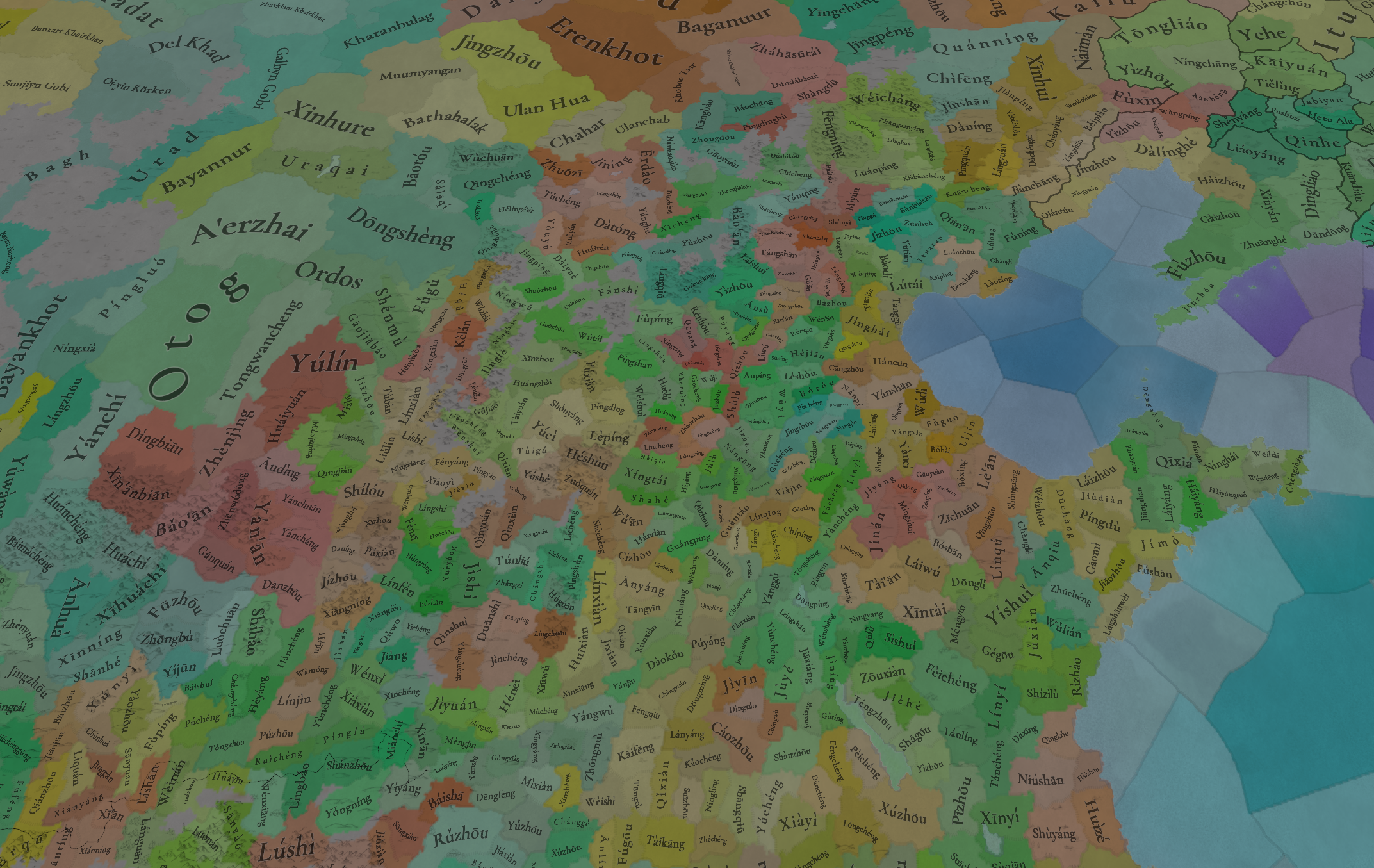
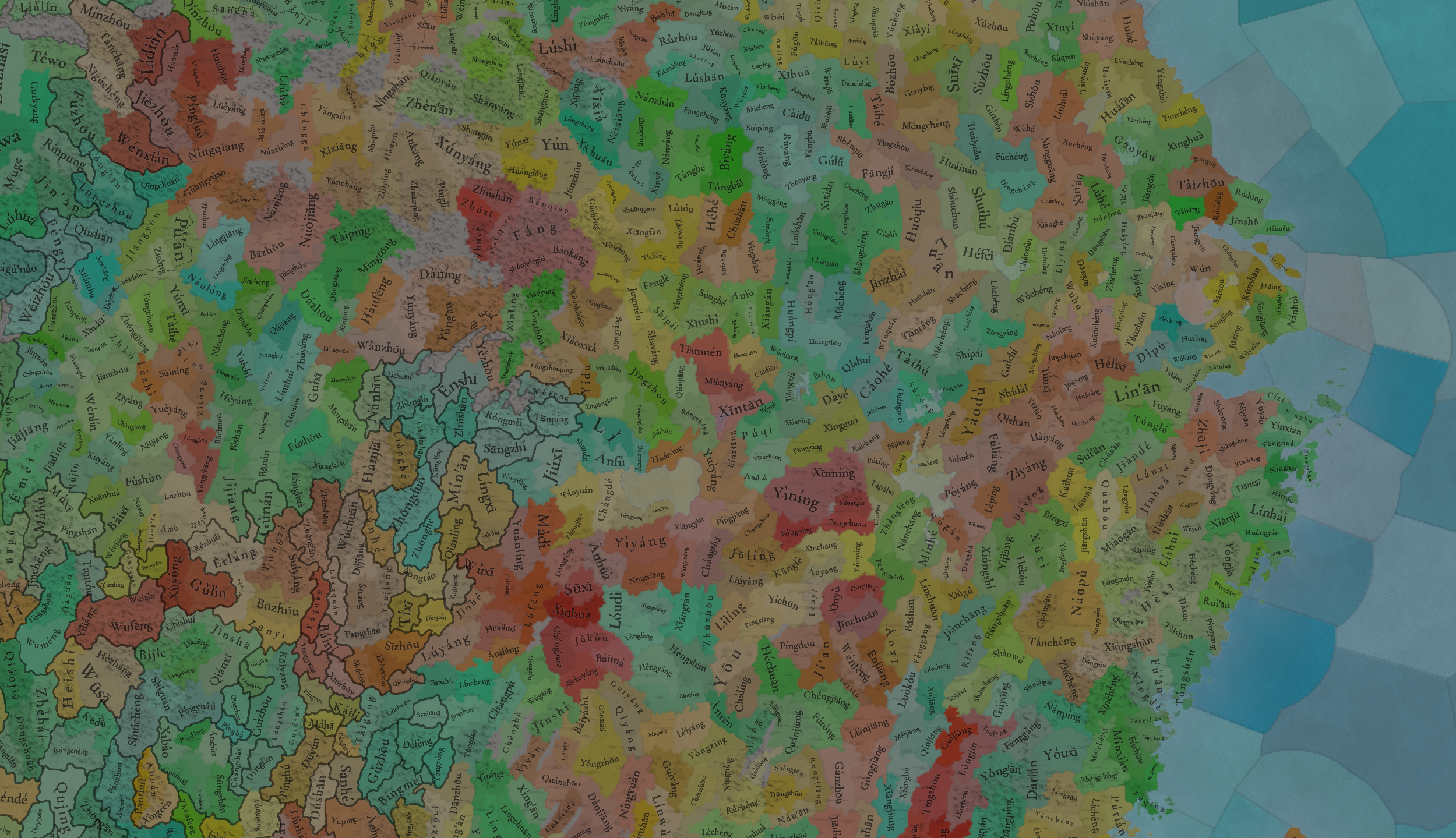
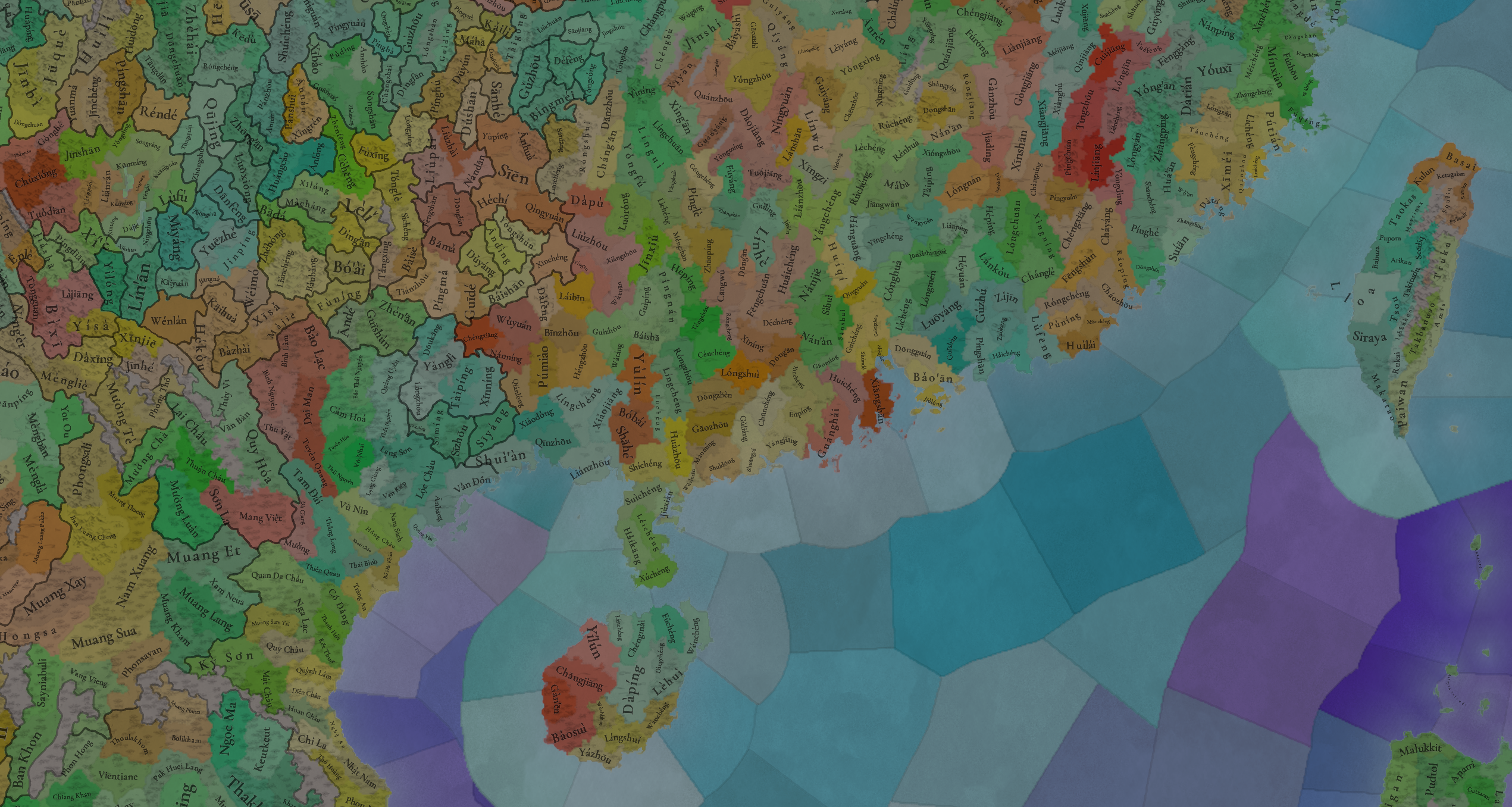
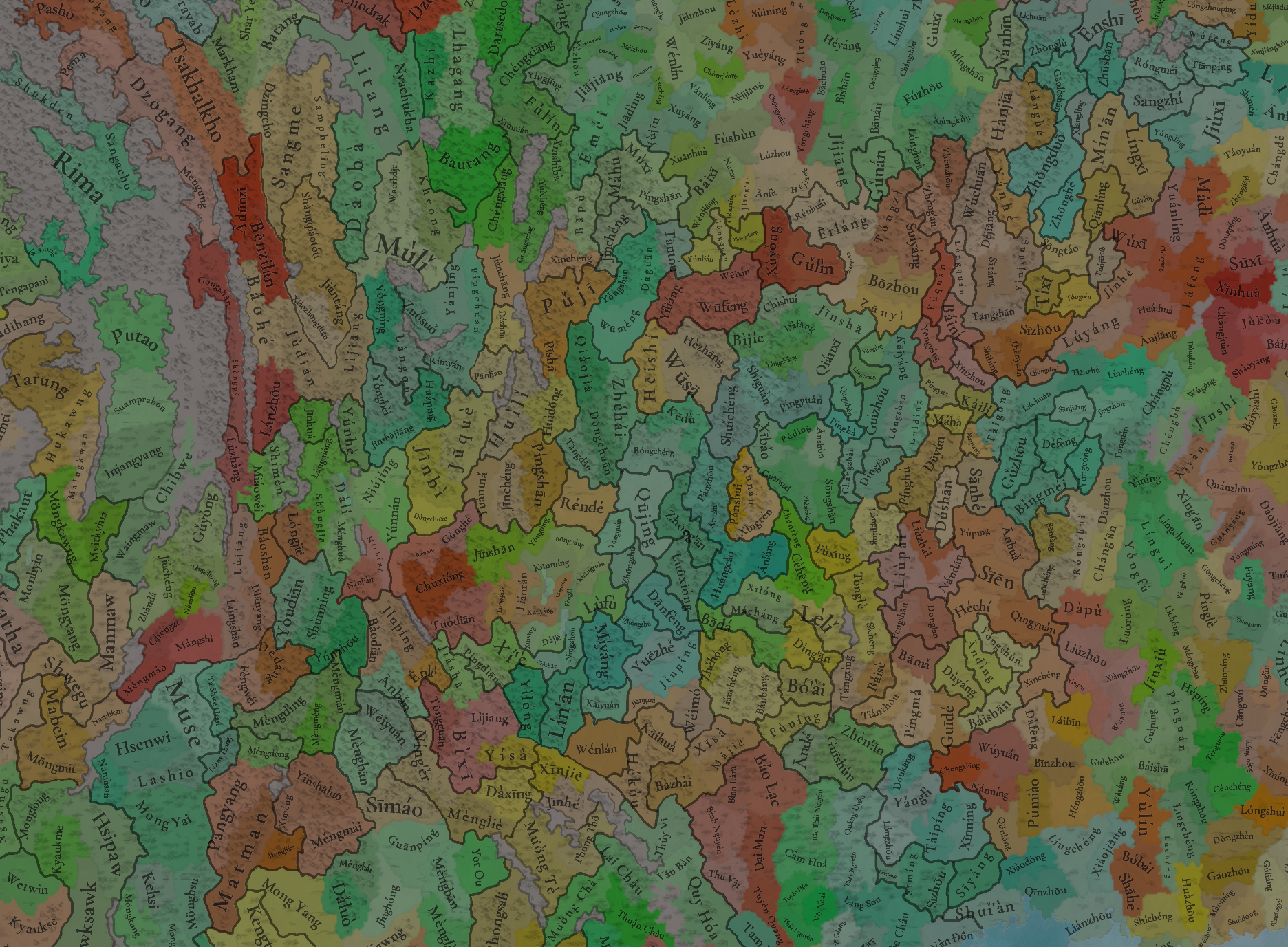
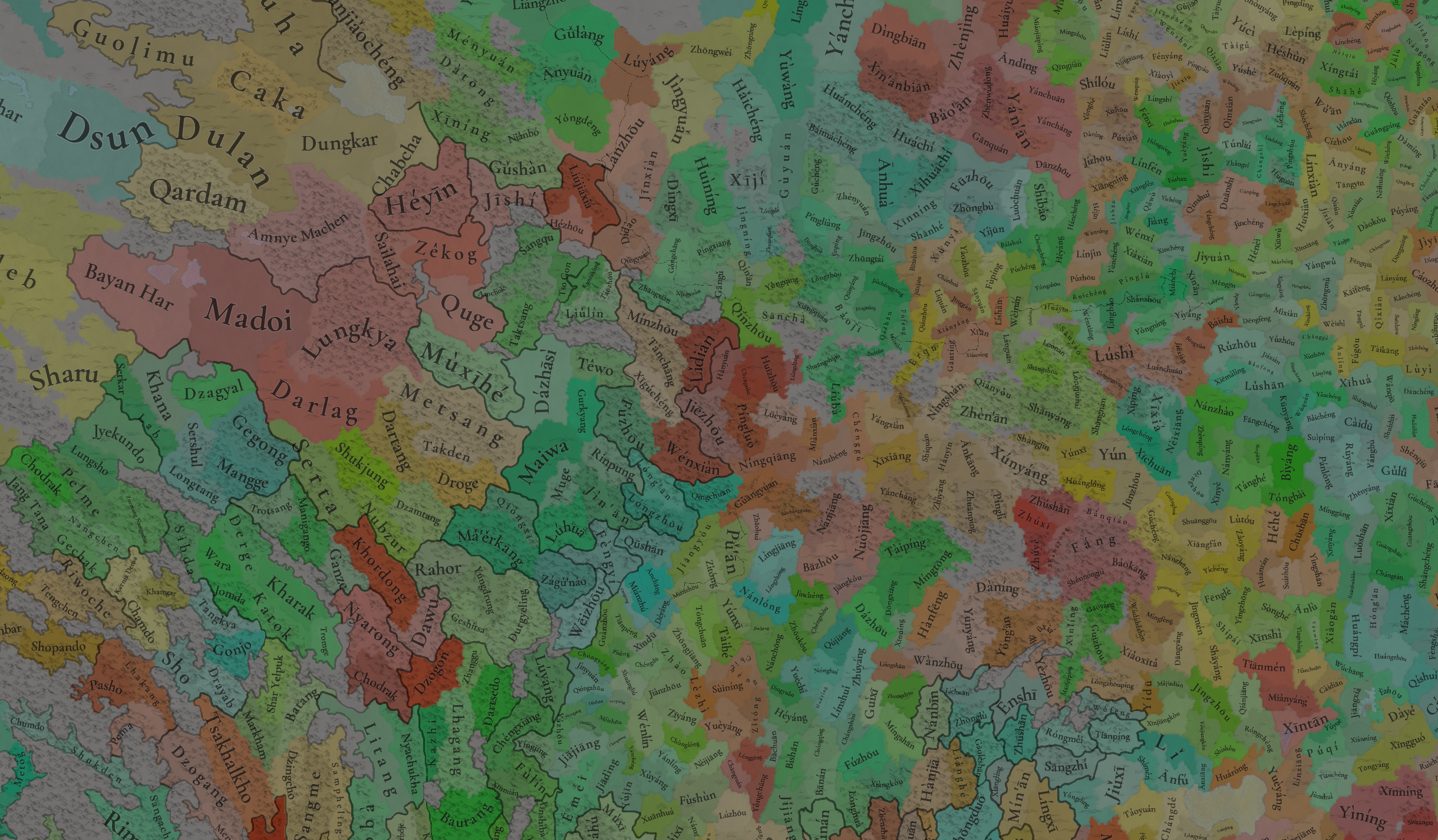
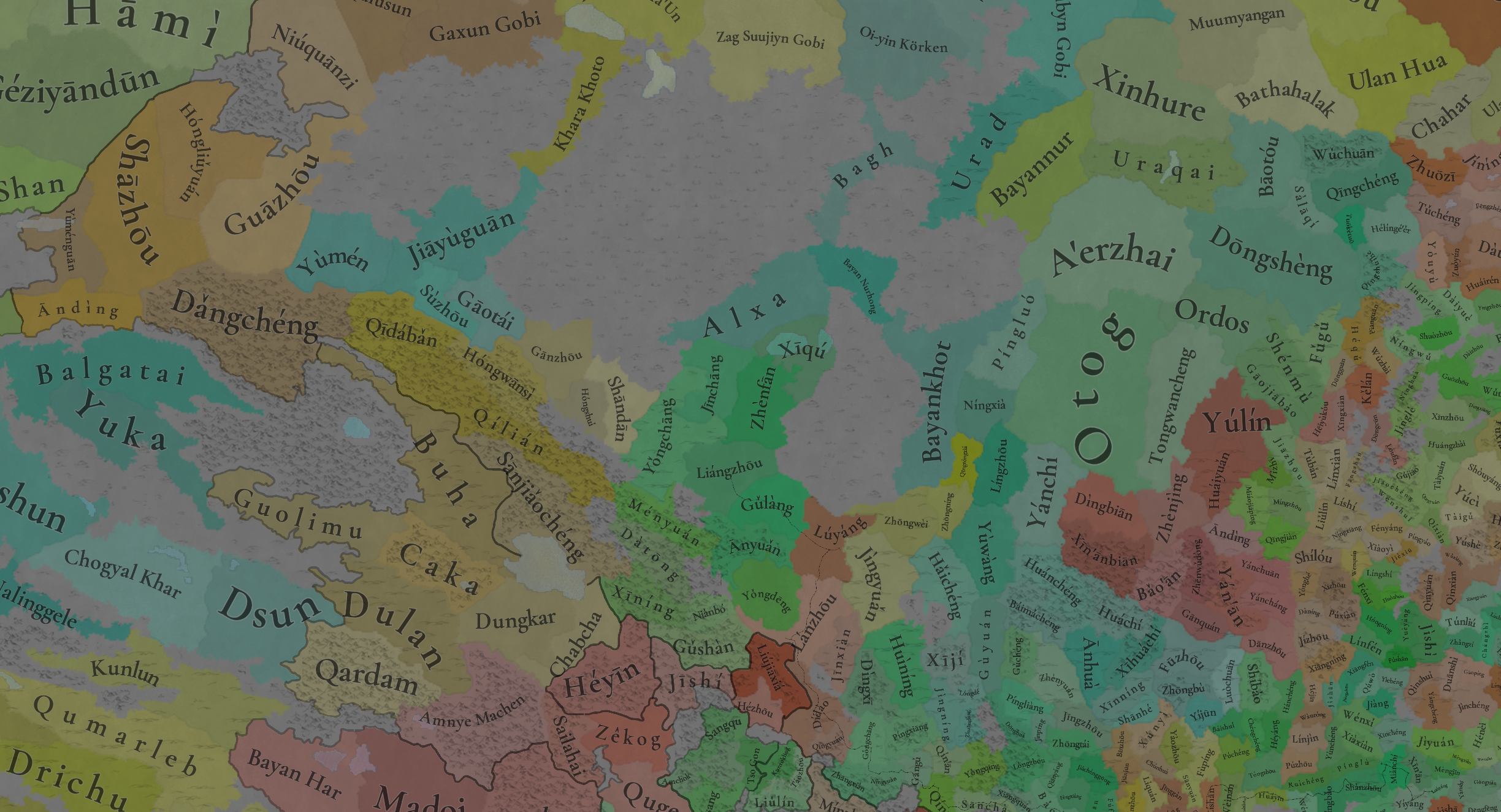
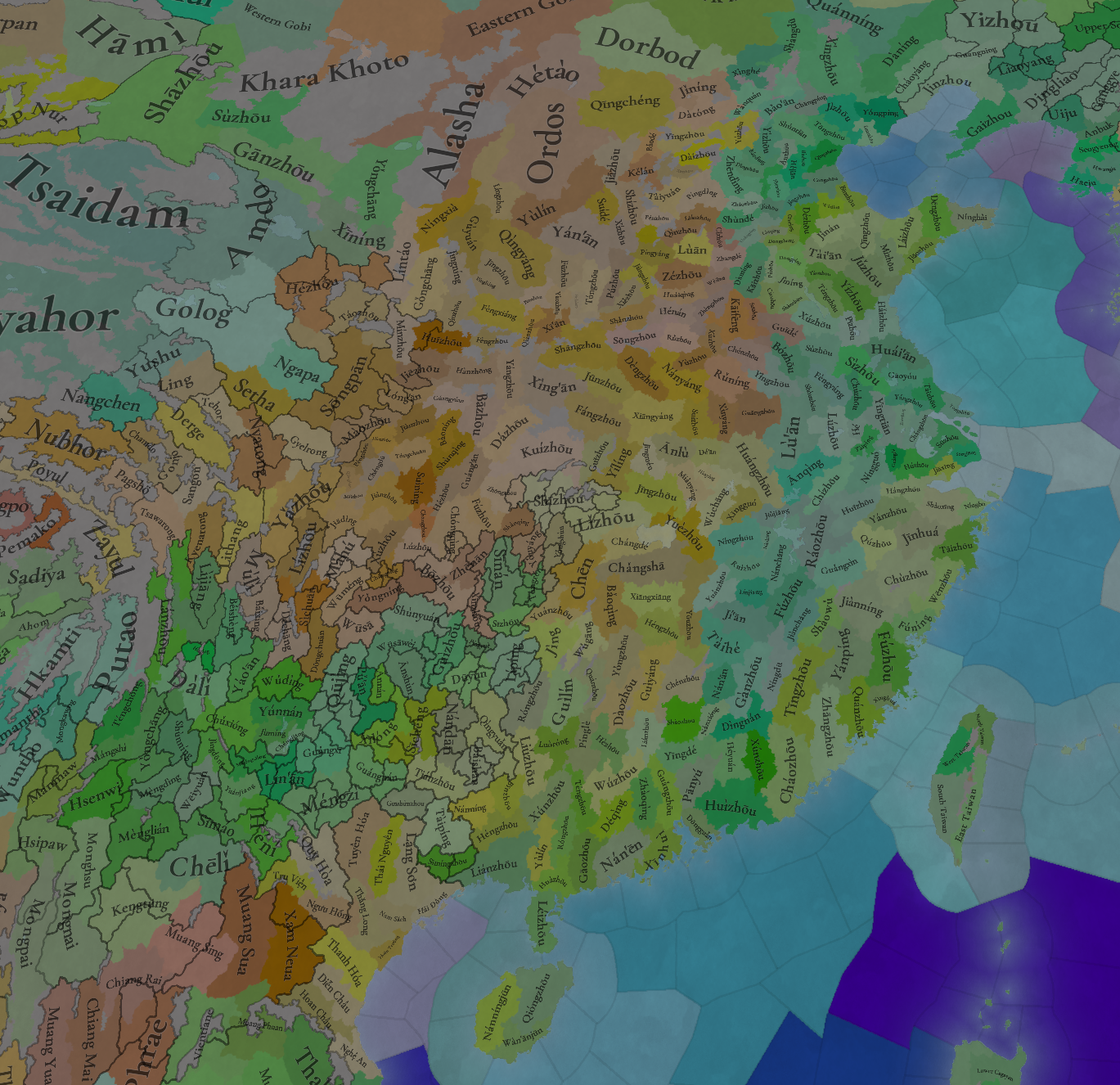
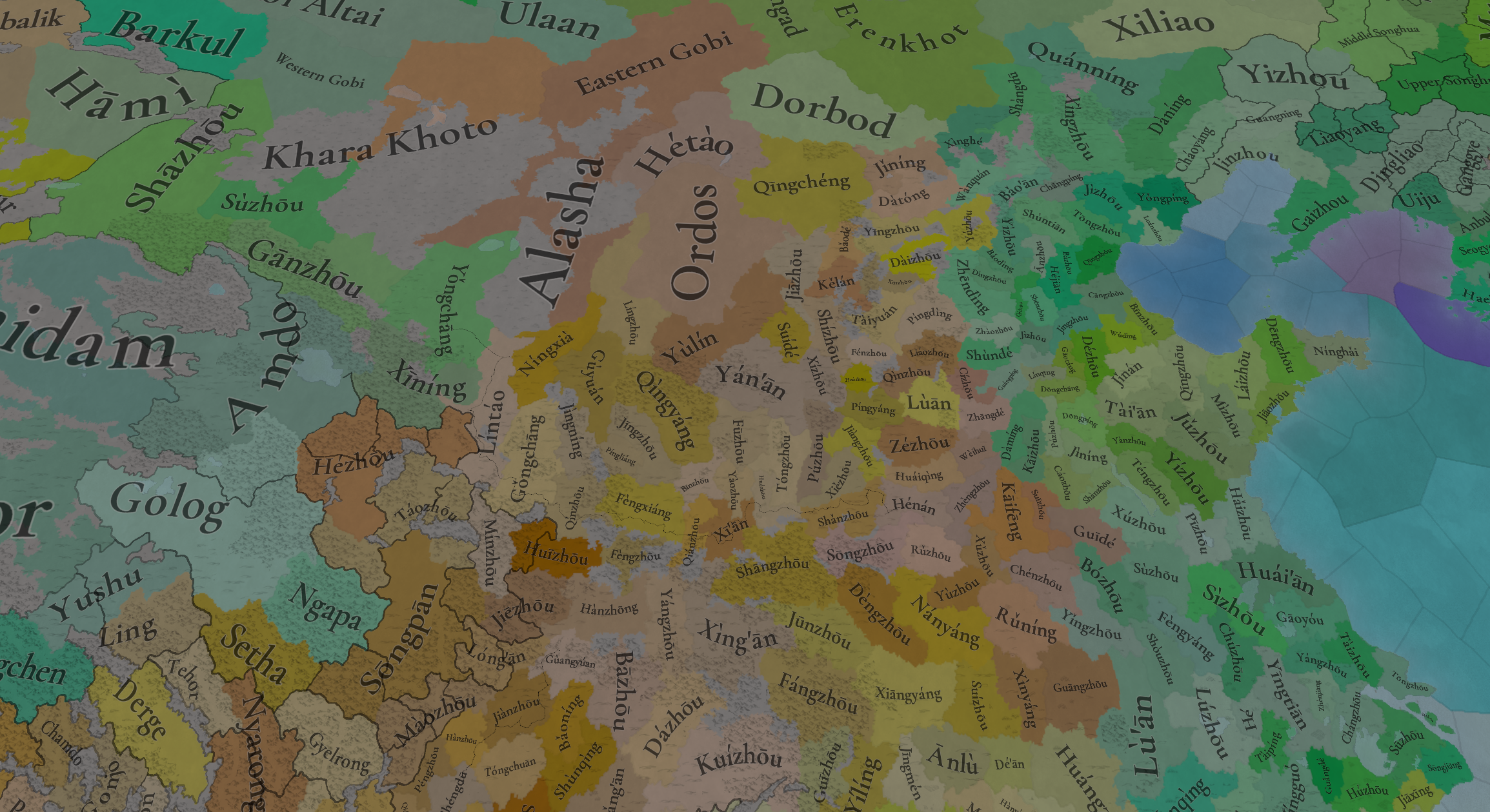
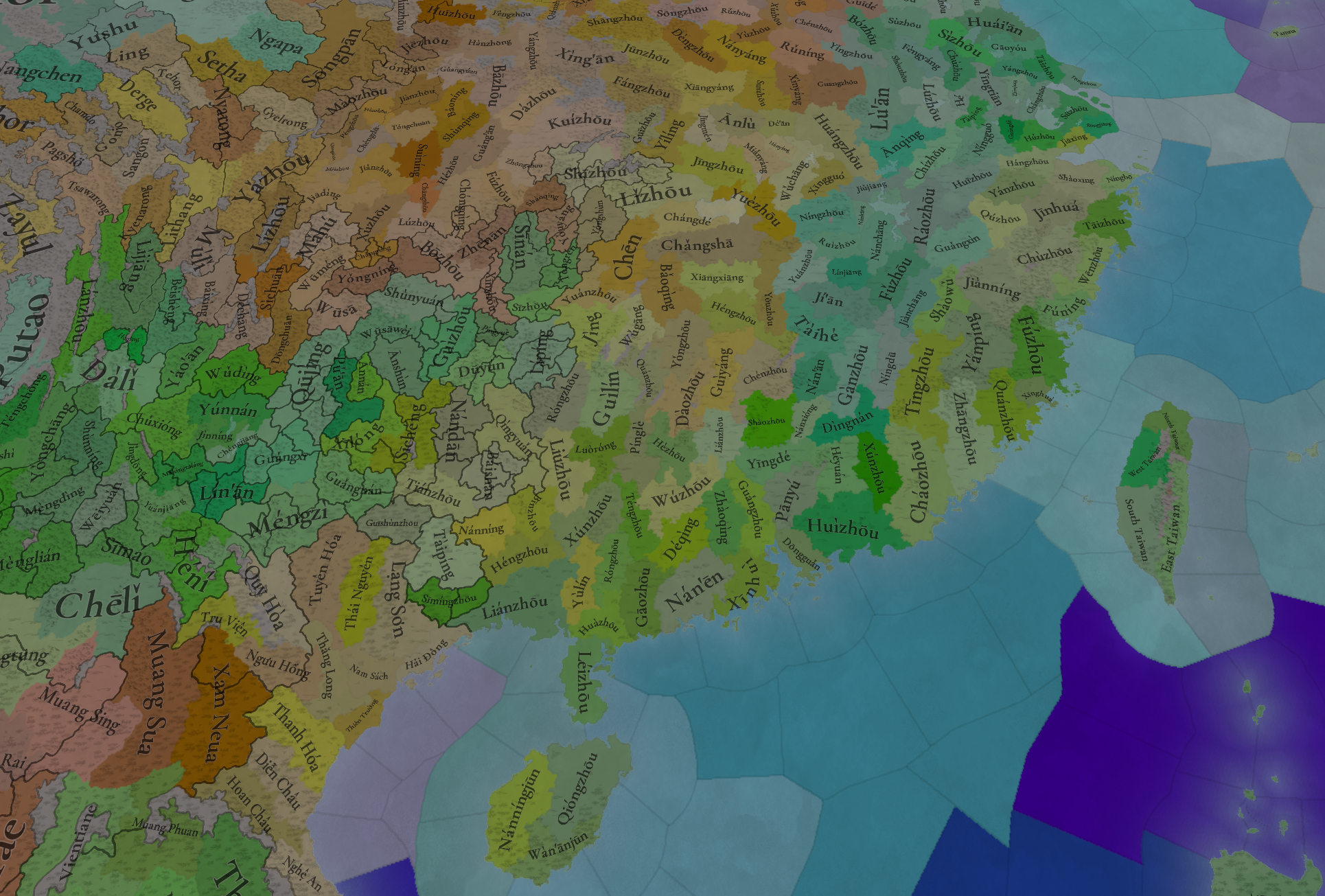
Areas:
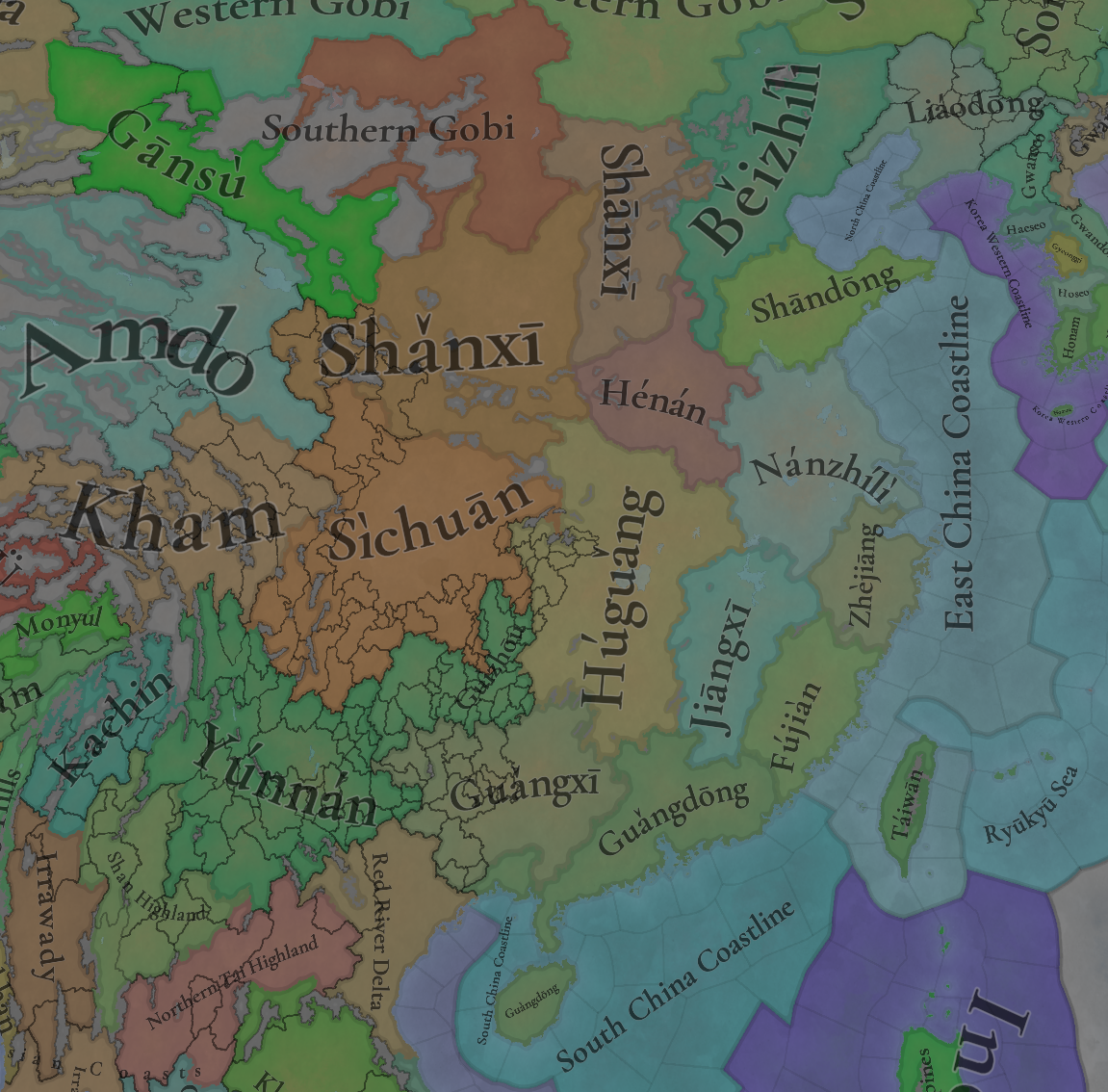
Terrain:
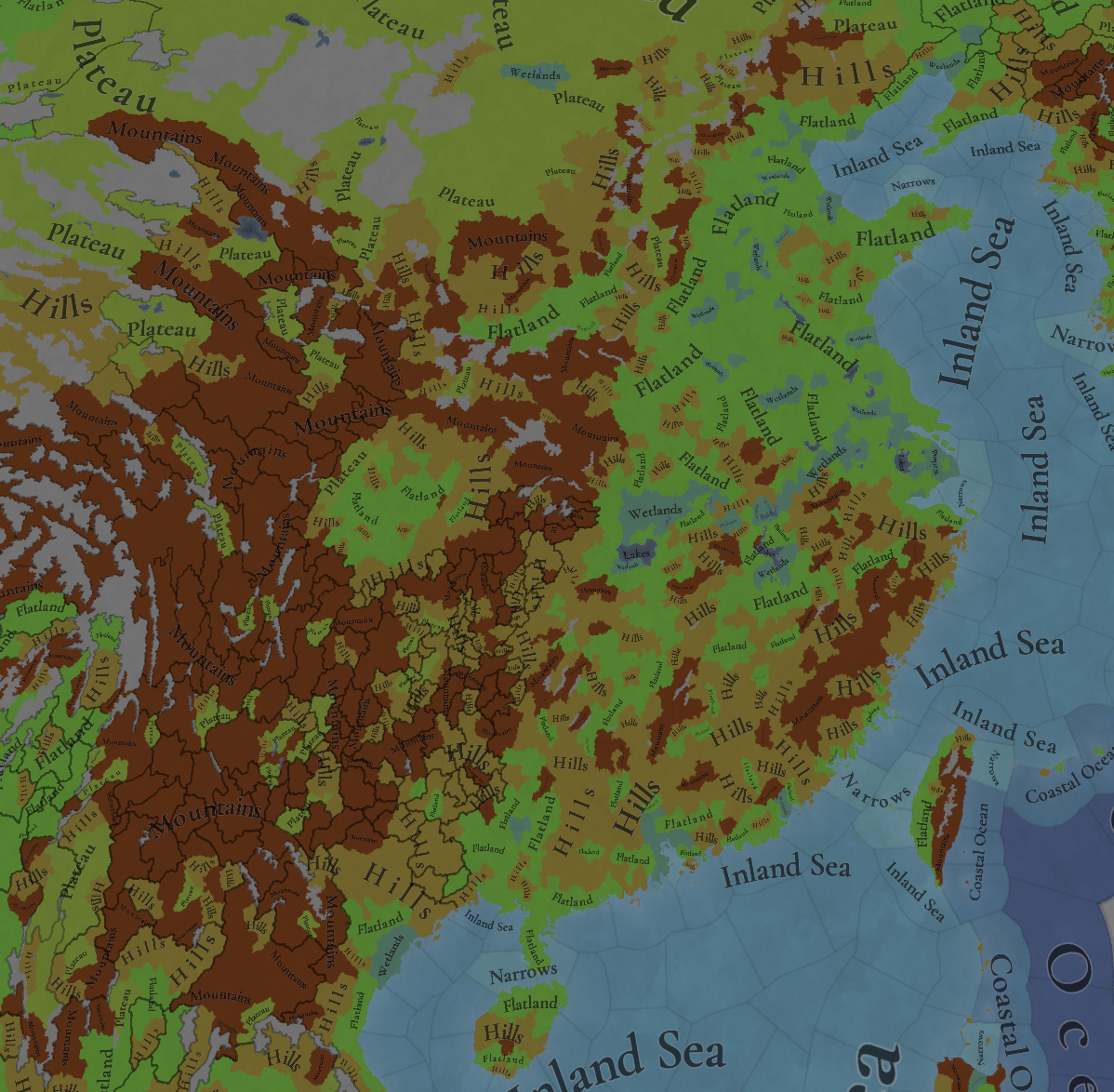
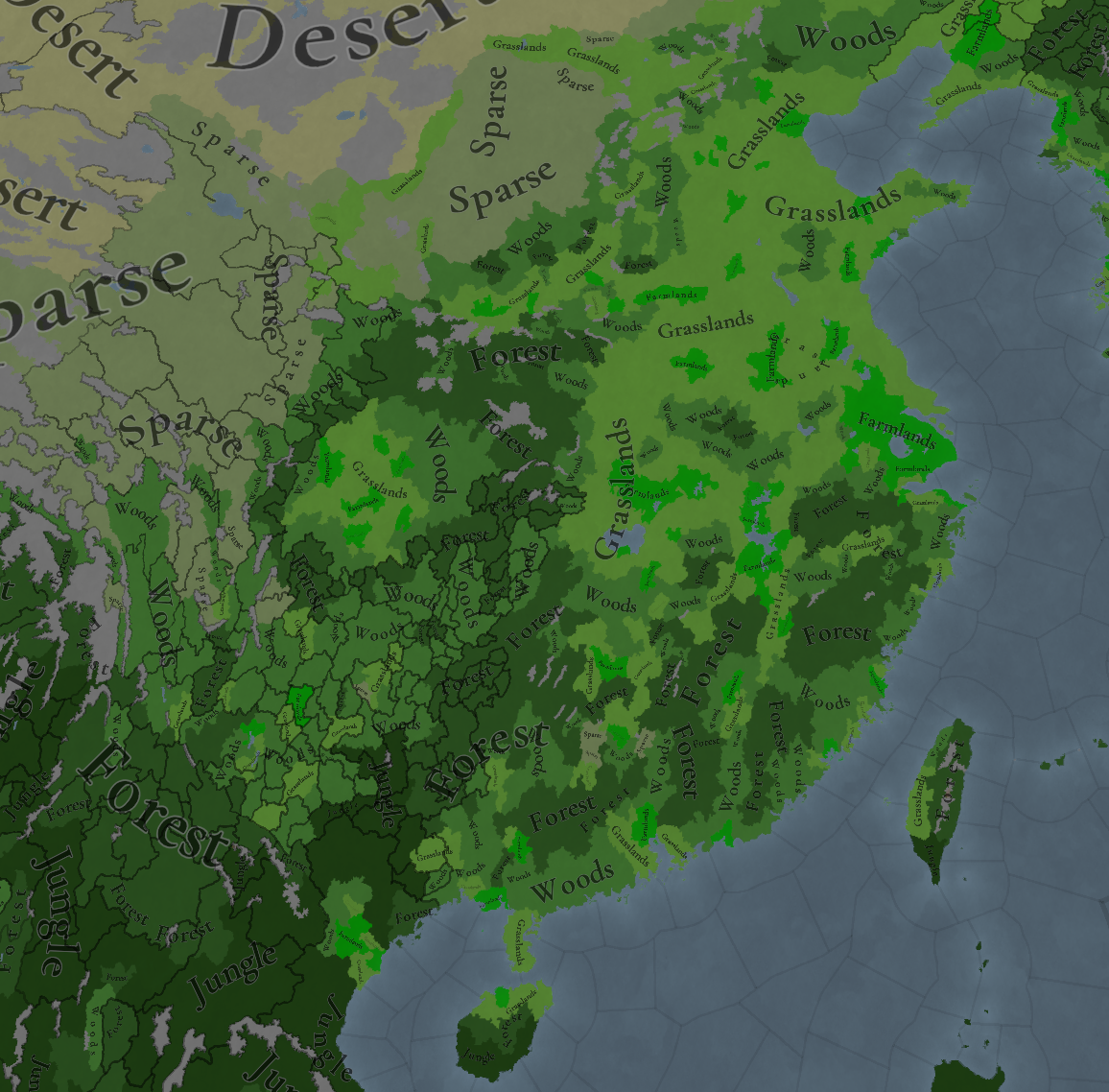
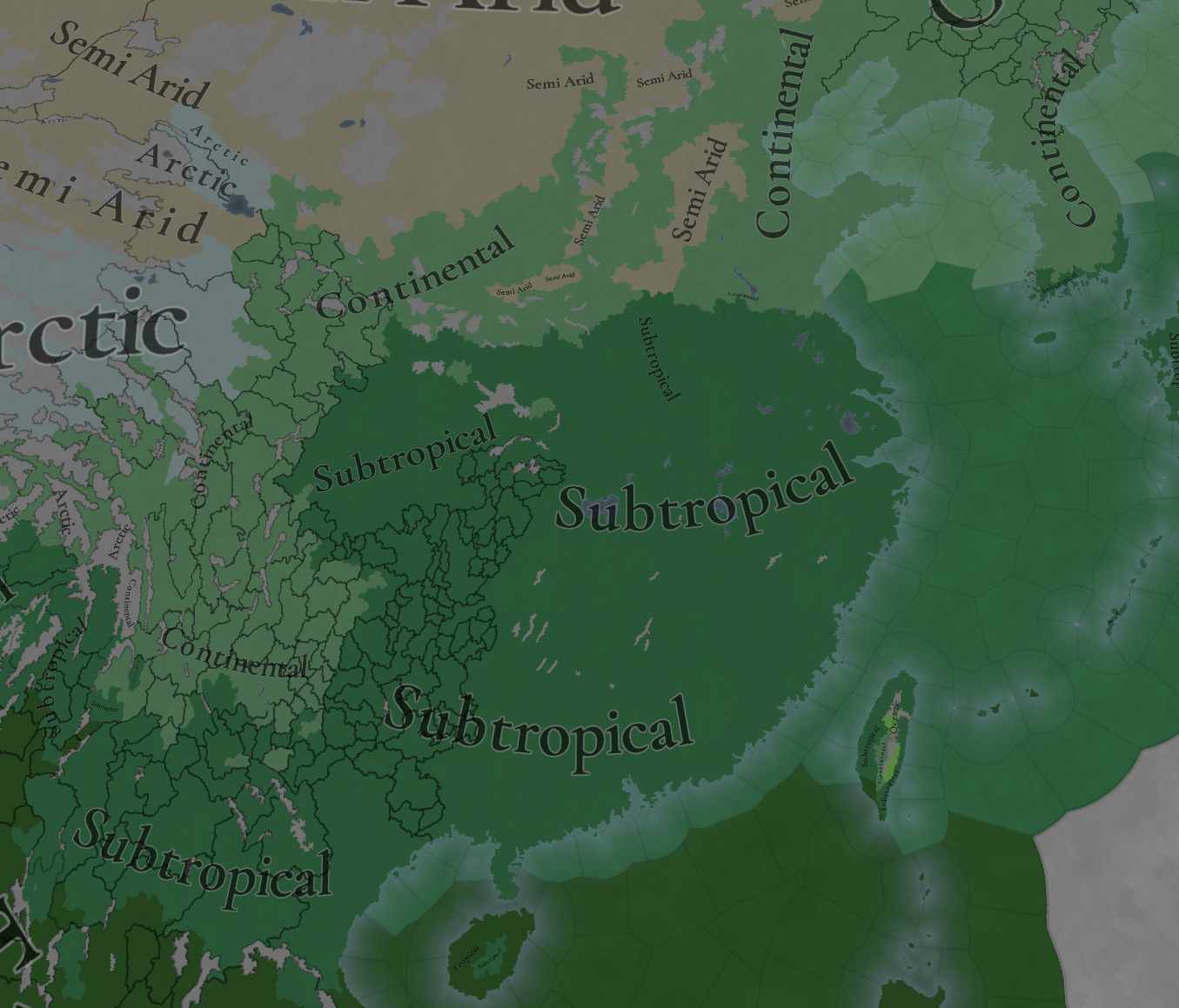
Development:
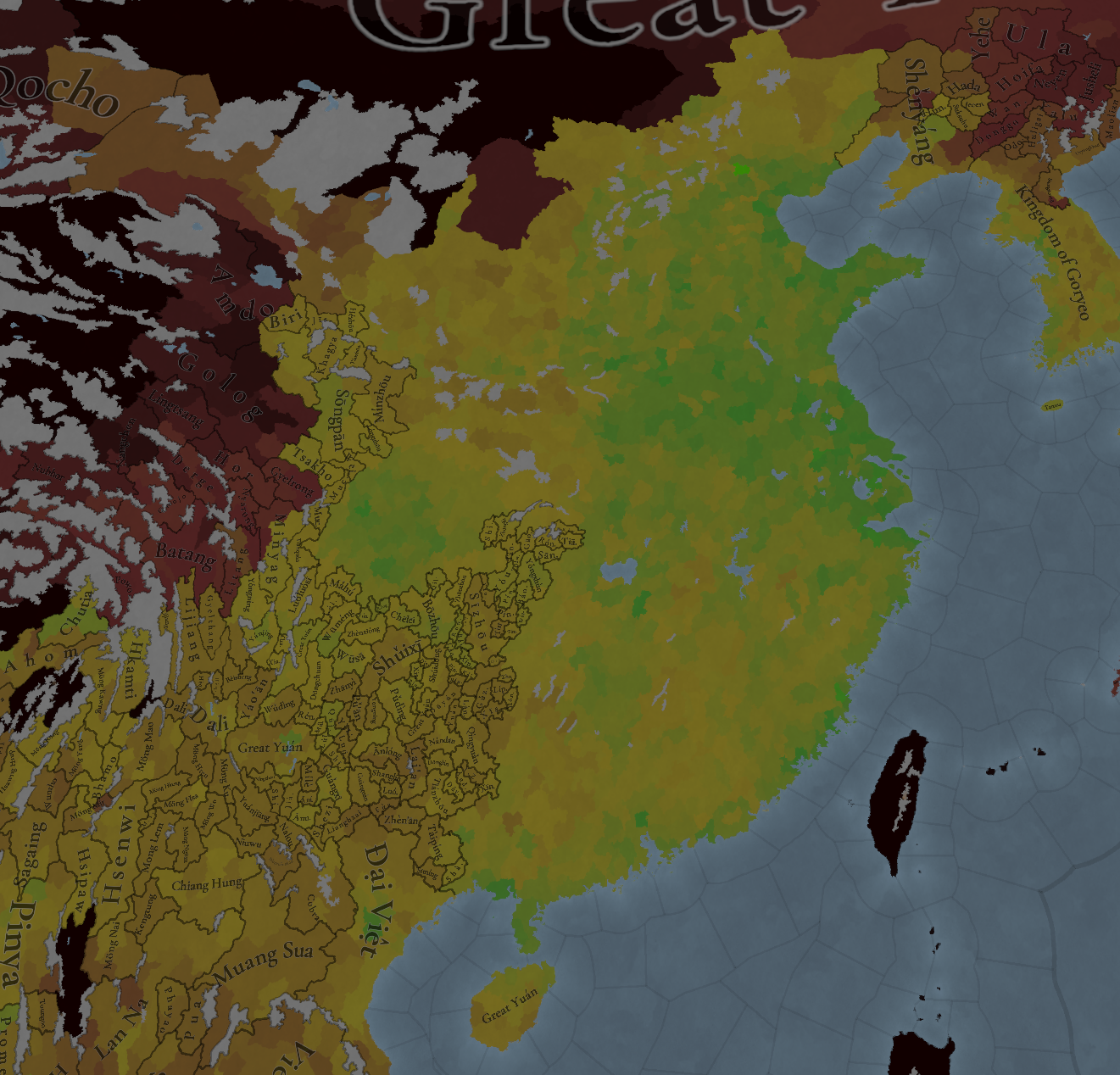
There are some pending adjustments towards making the division between the ‘core’ China region and the northern provinces less steep; we’re holding them a bit, until we complete the final regional division divide (which will be soon).
Harbors:
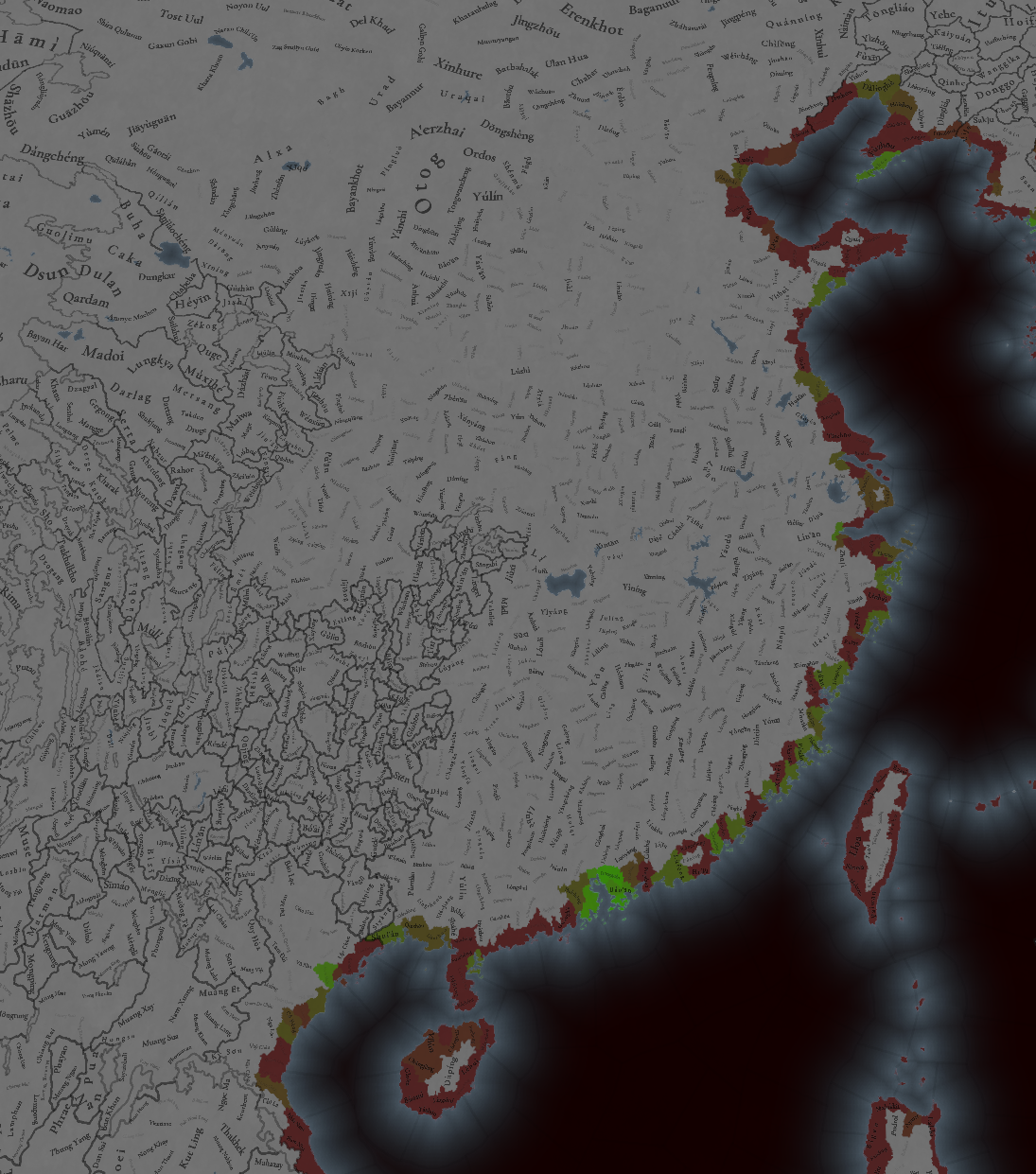
Cultures:
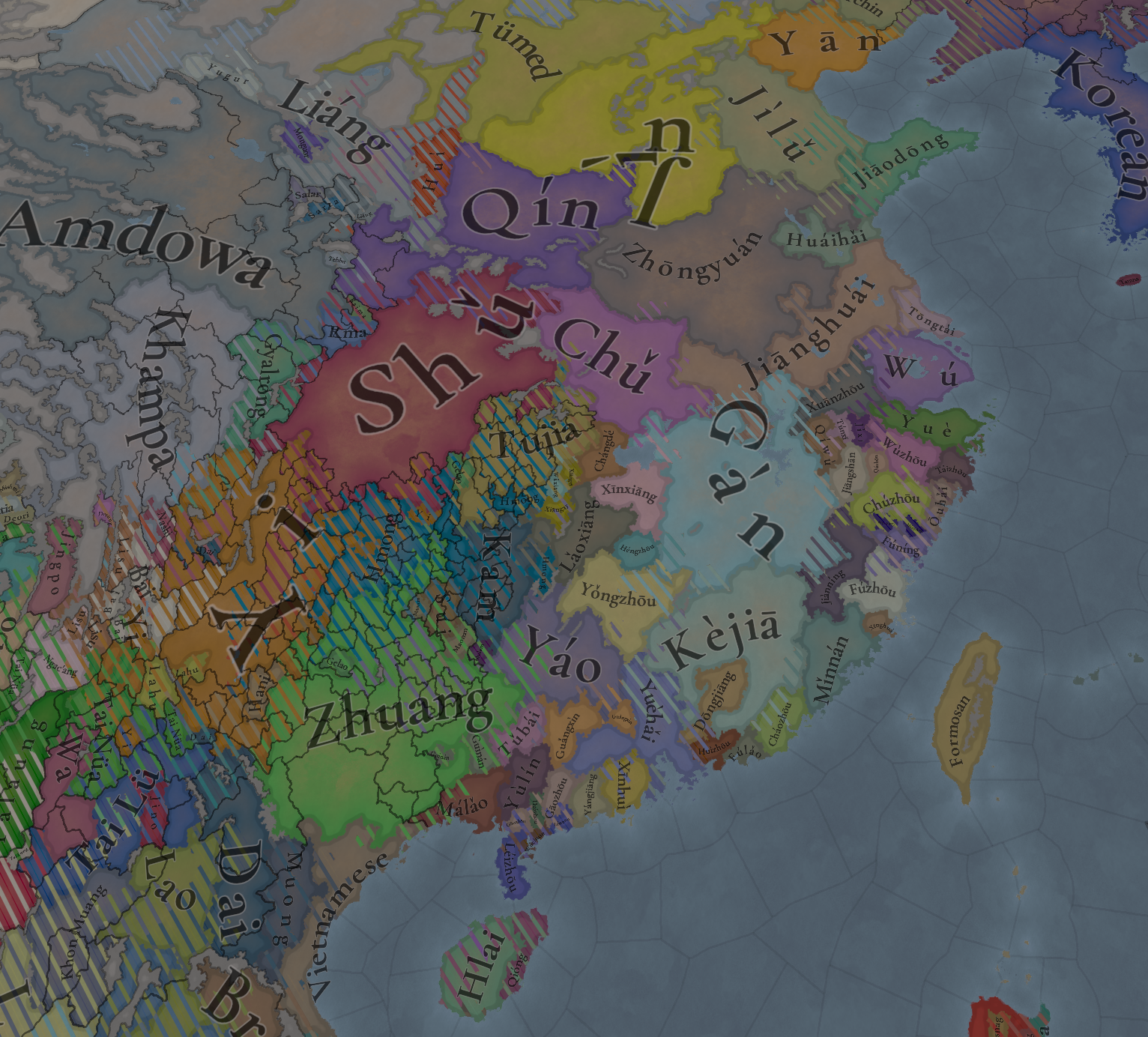
China had quite a bit of cultures before the review, now it has quite a bit more, also with plenty of minorities…

Languages
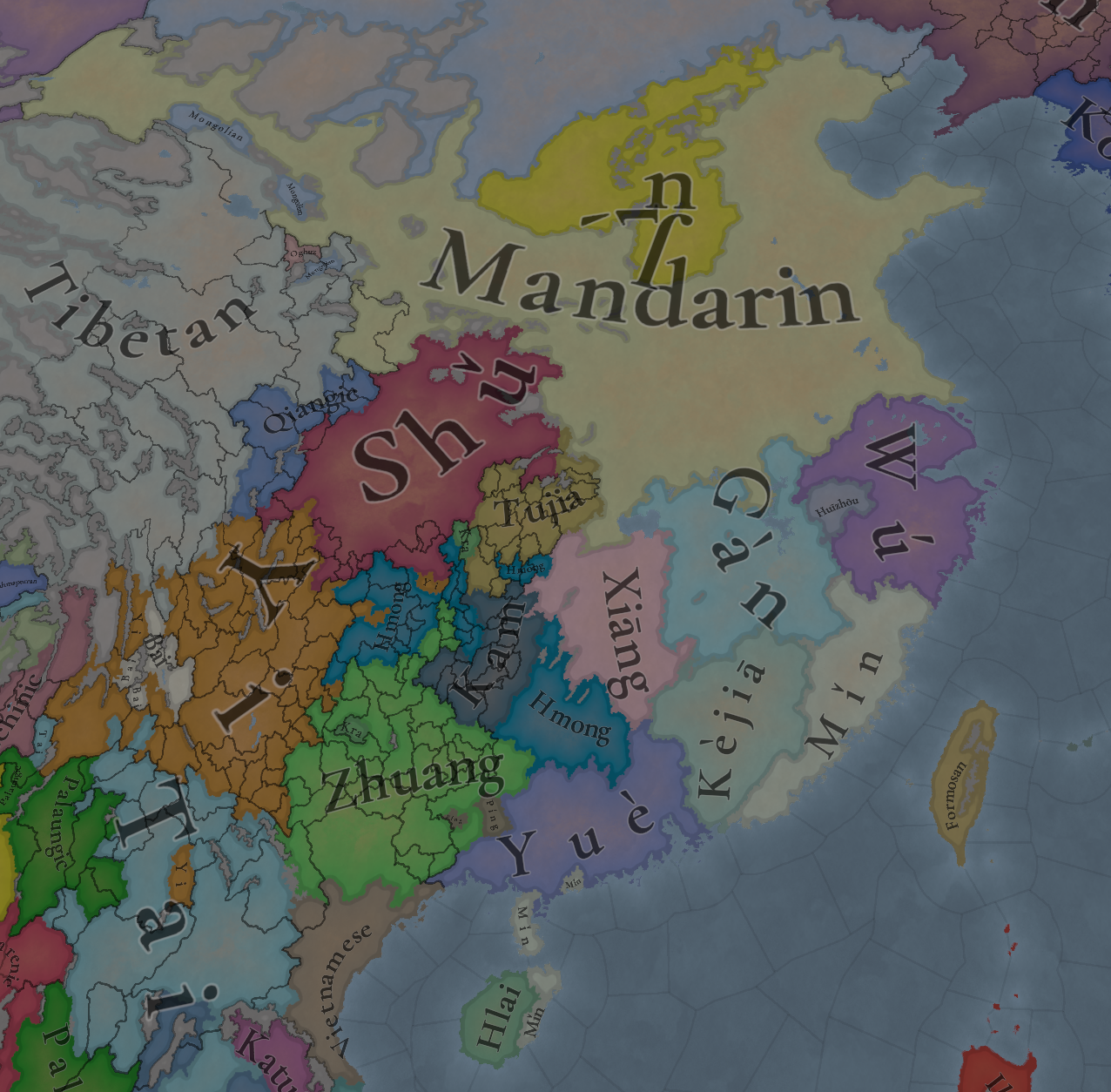
Location languages
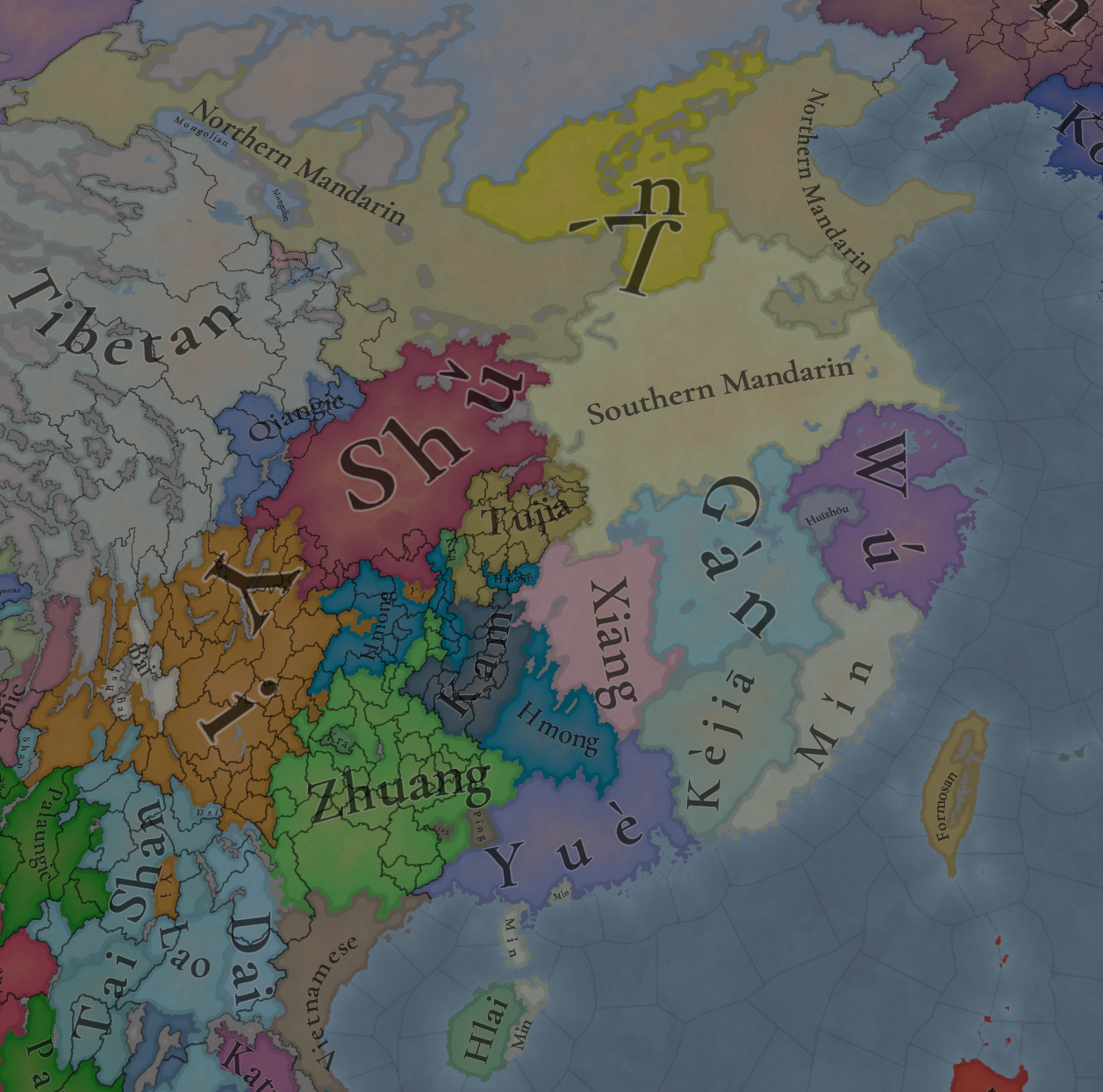
Location dialects
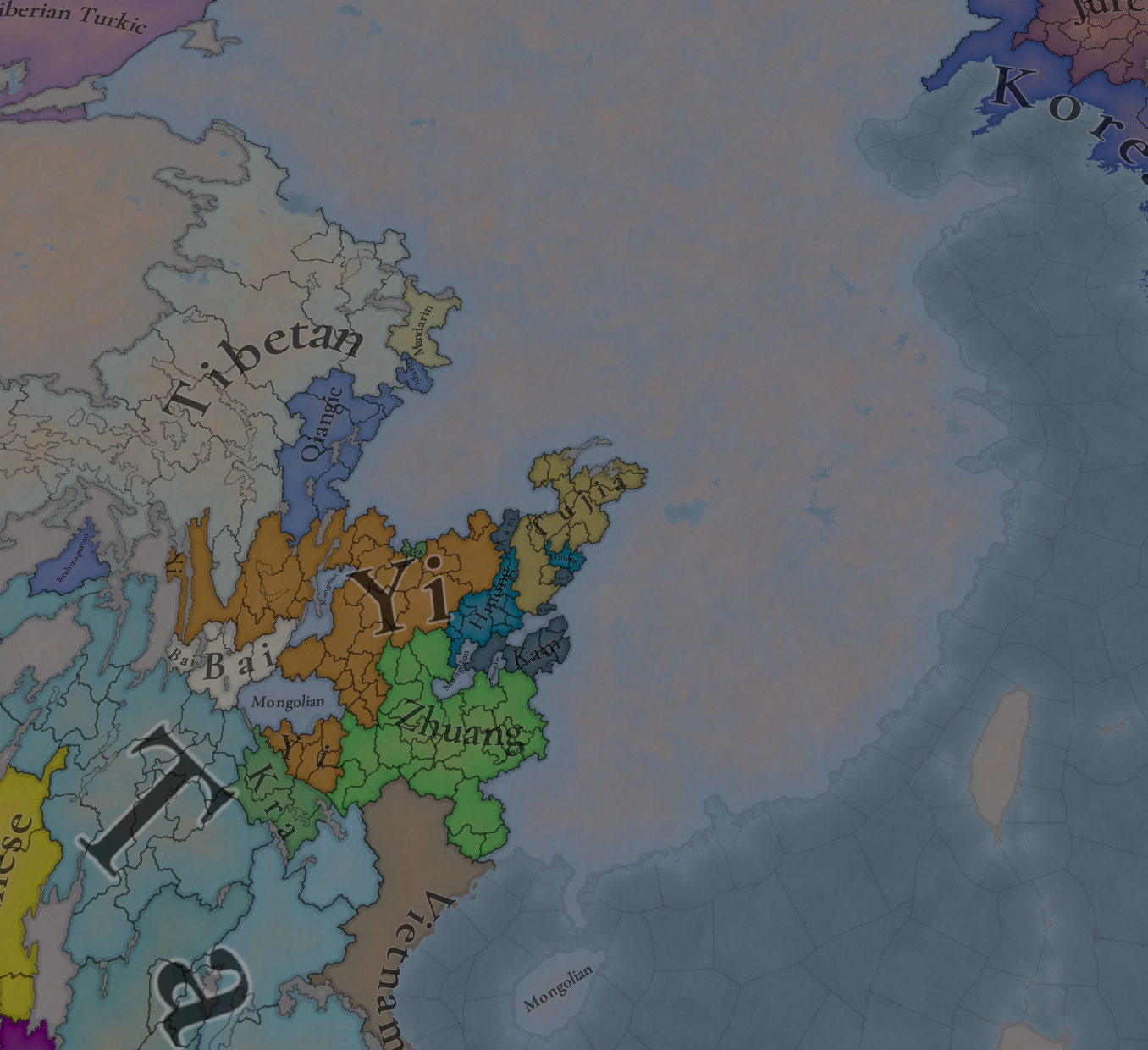
Country languages (the Mongolian name is not visible in main China due to it being spread all over up to the Golden Horde)
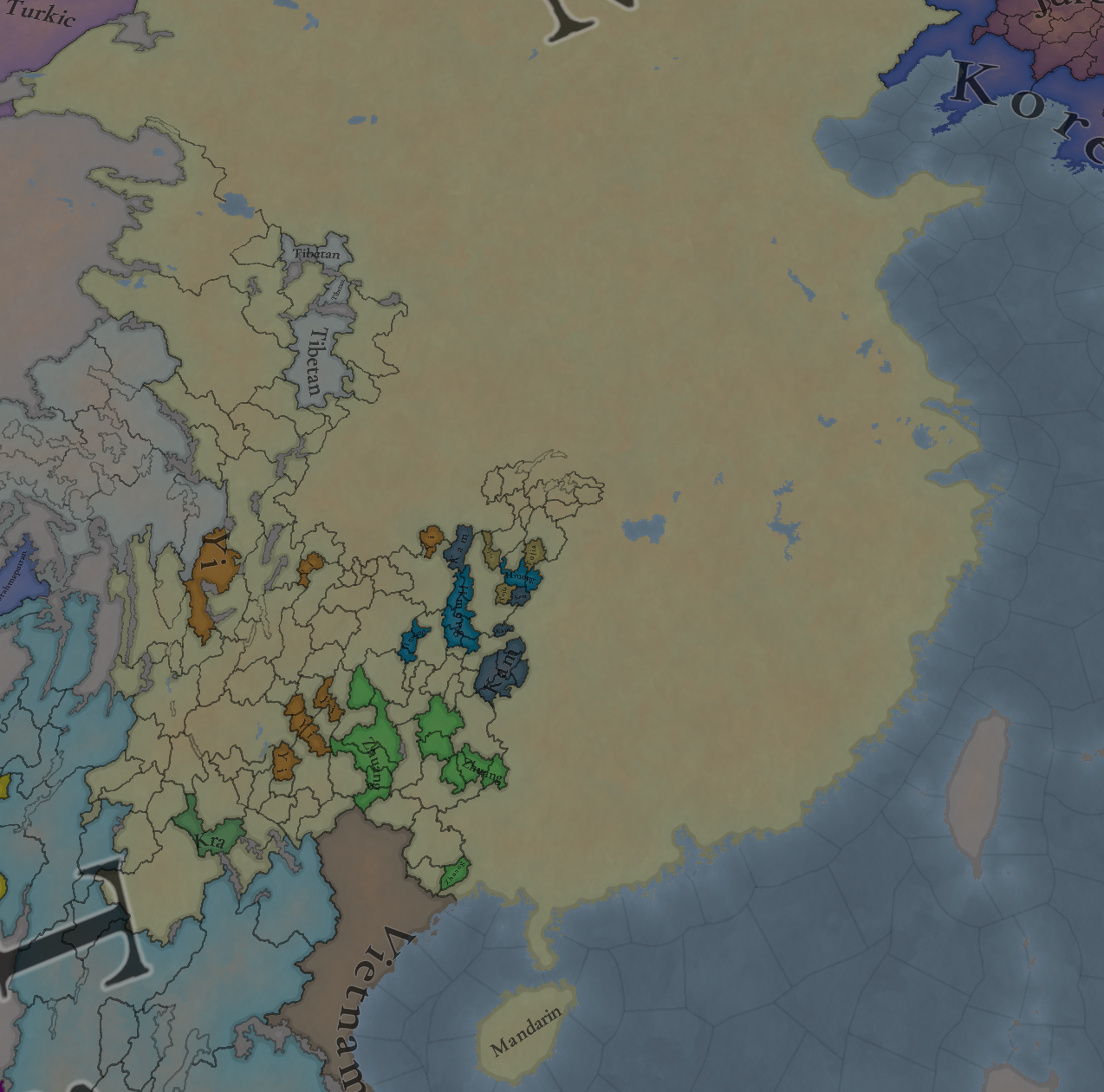
Court Languages. Mandarin is also the court language of all direct vassals of Yuán, while those using other languages are vassals of vassals.
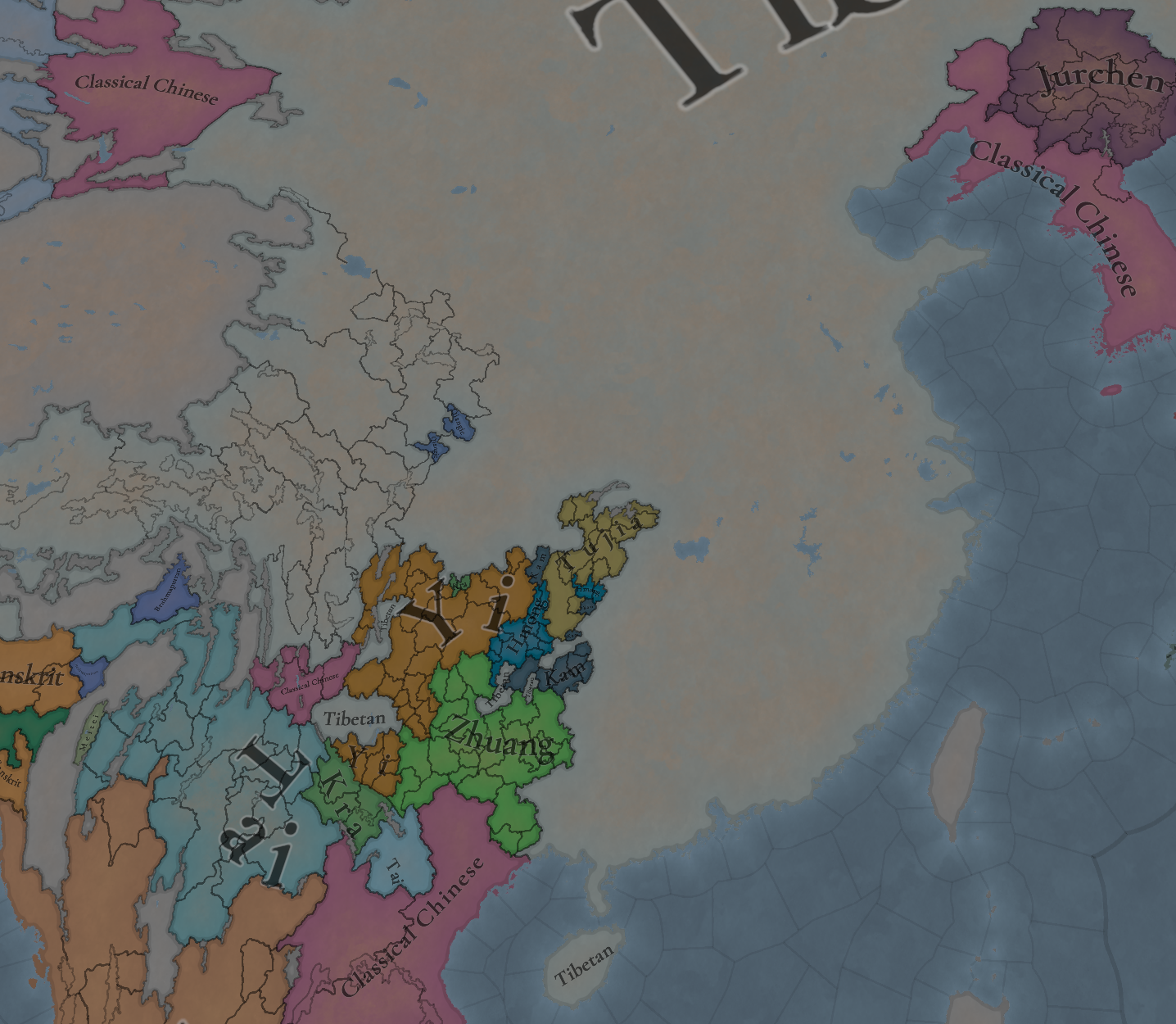
Liturgical Languages. Yuán starts following Tibetan Buddhism, so it uses Tibetan Language, but Eastern Buddhism as well as Sānjiào are set to use Classical Chinese.
Religion:
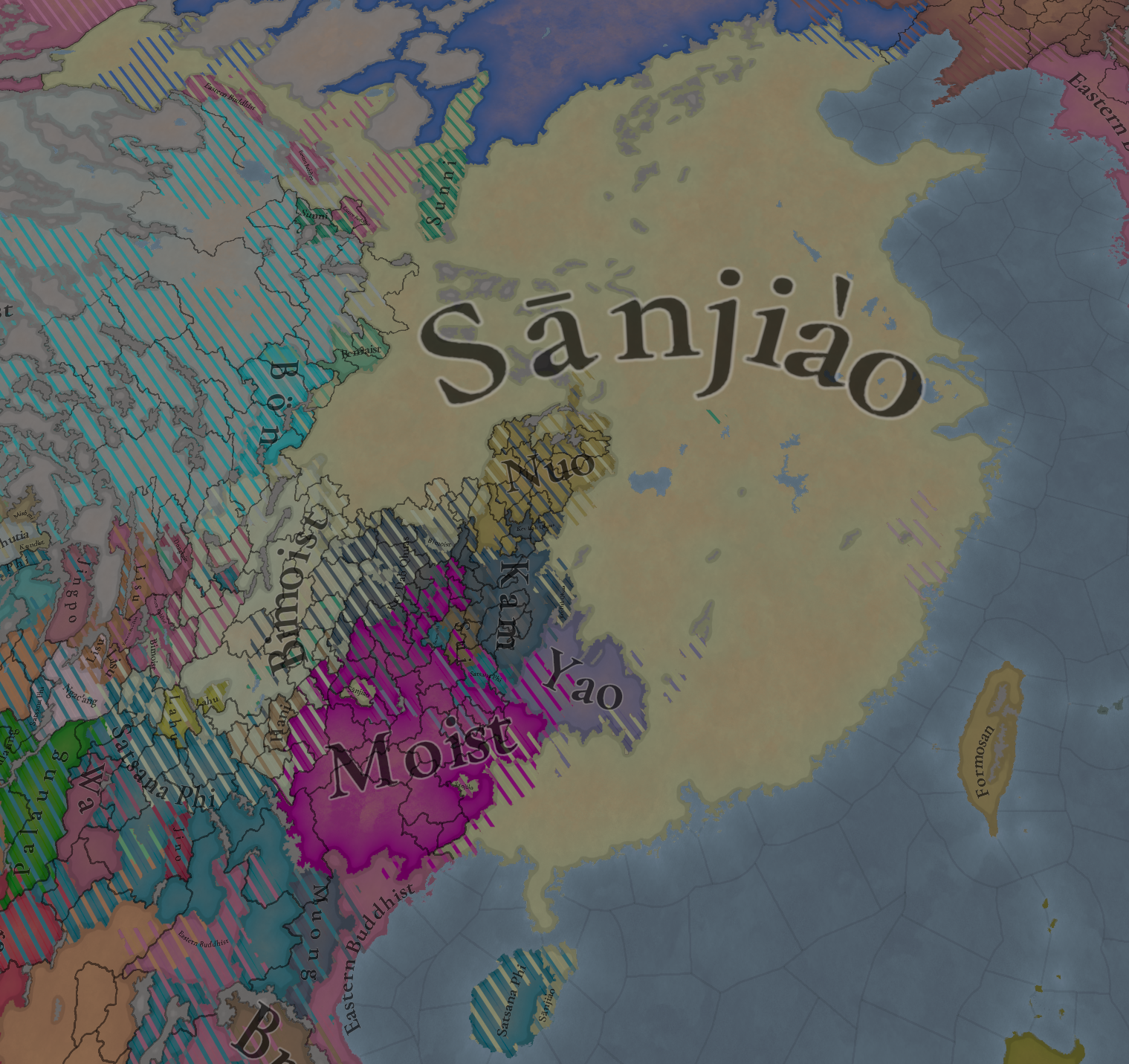
Raw Materials:
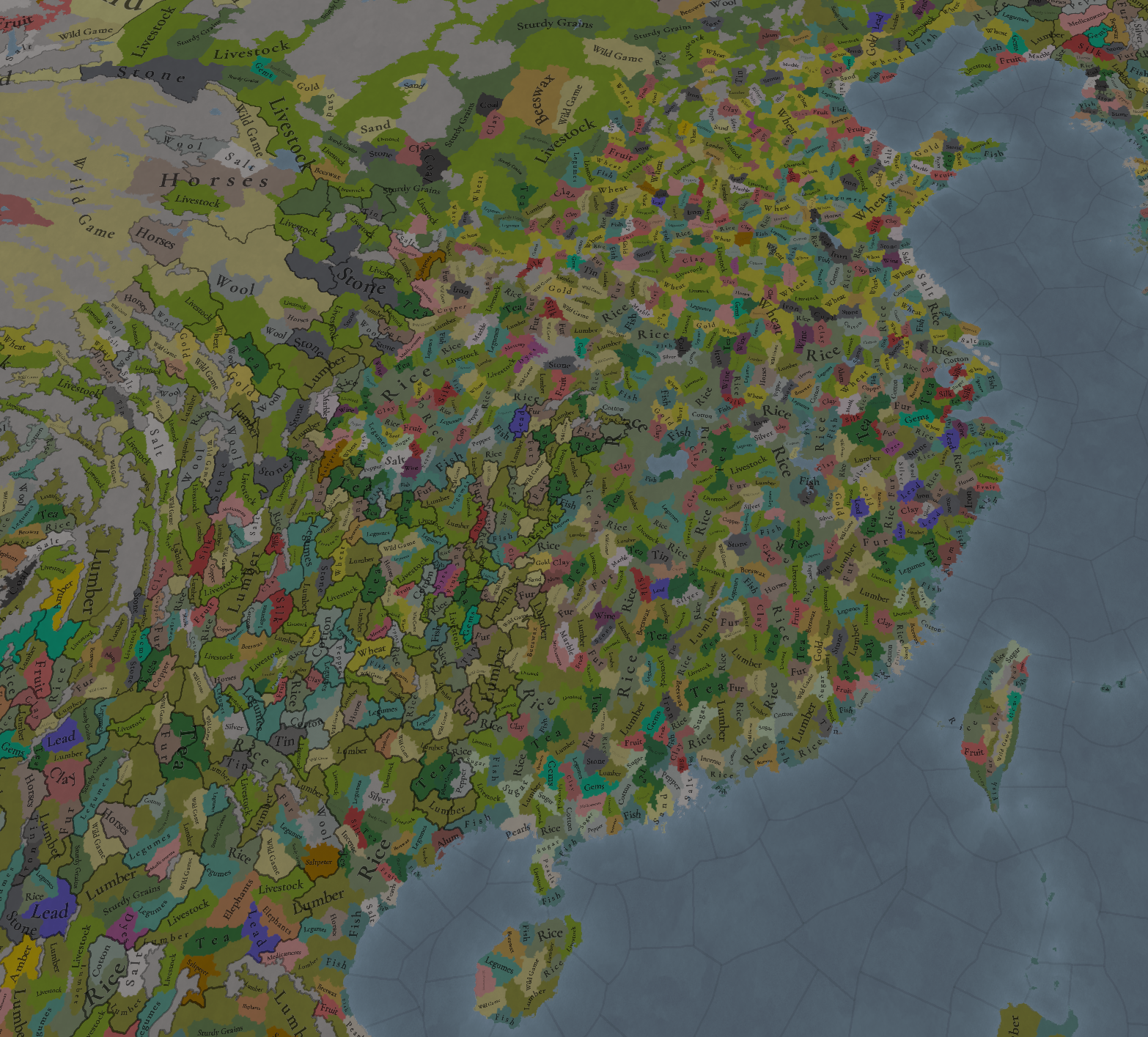
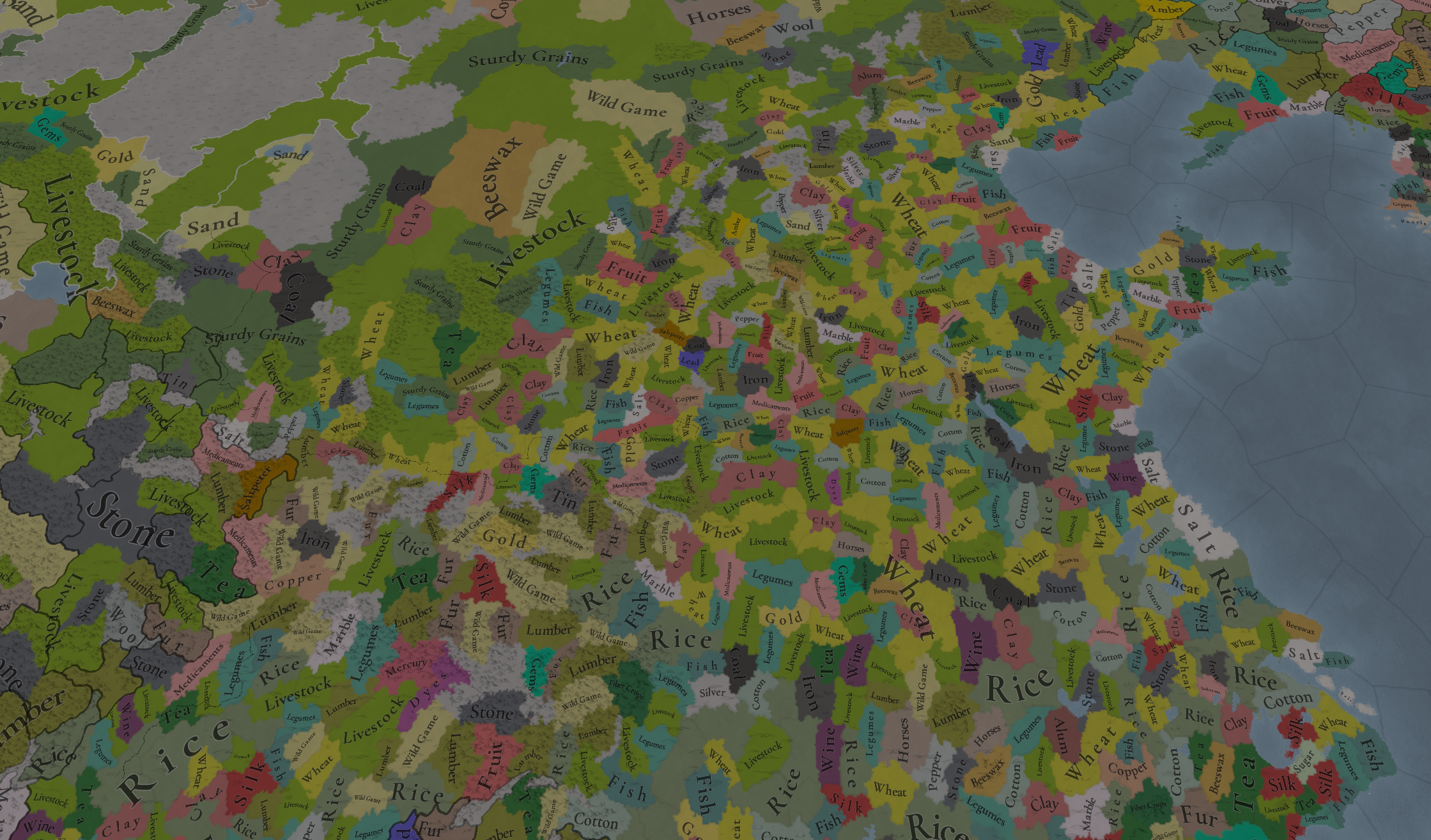
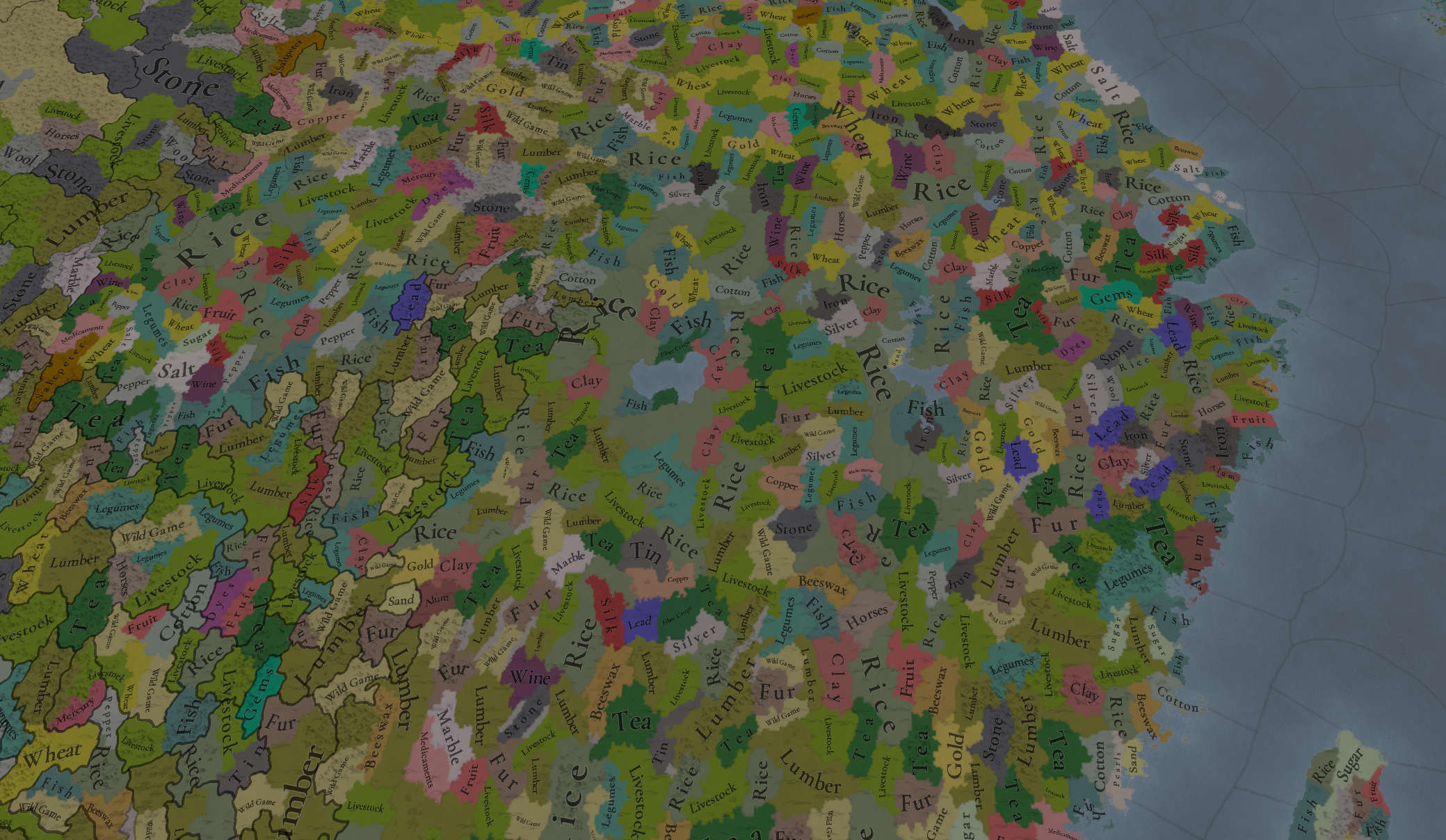
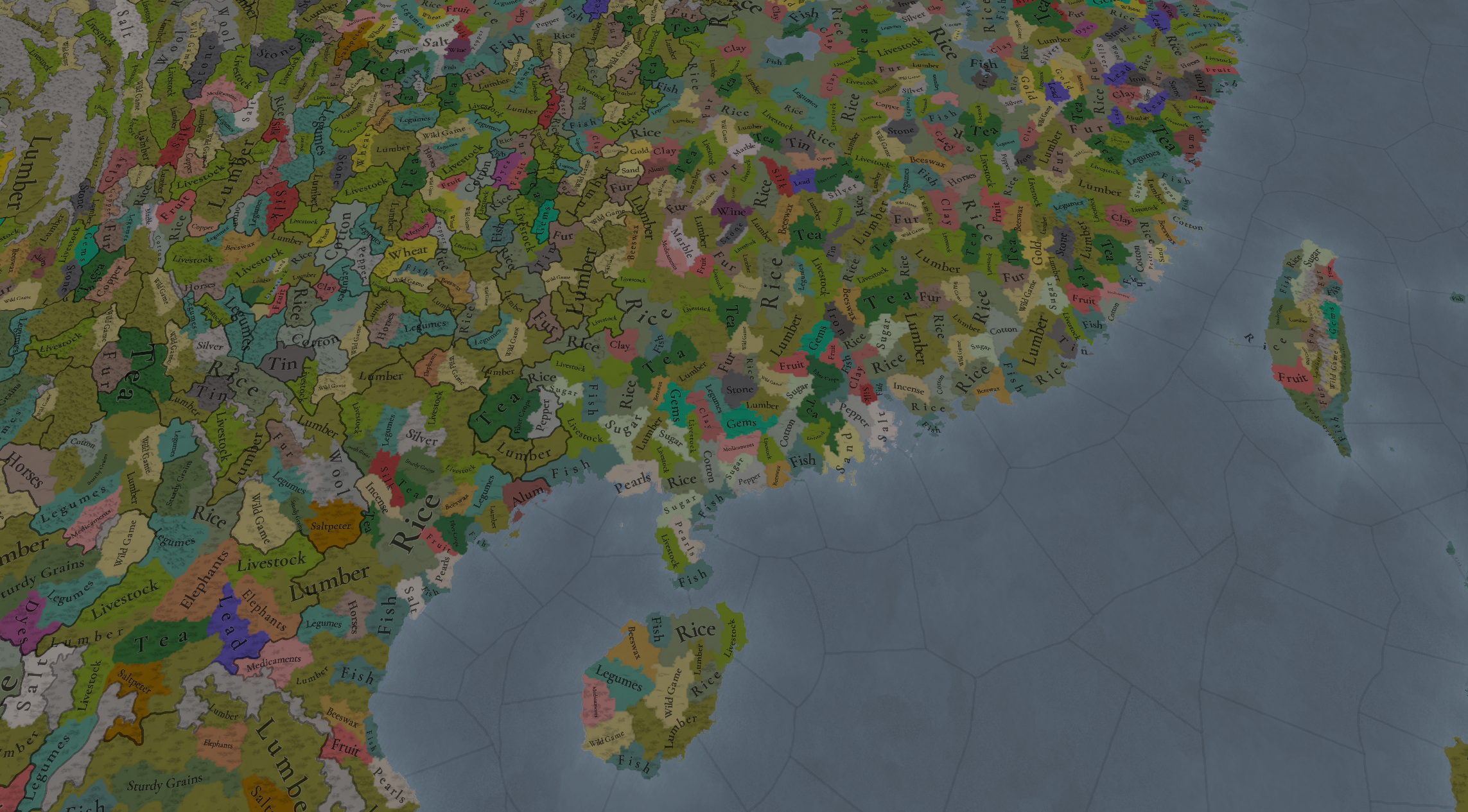
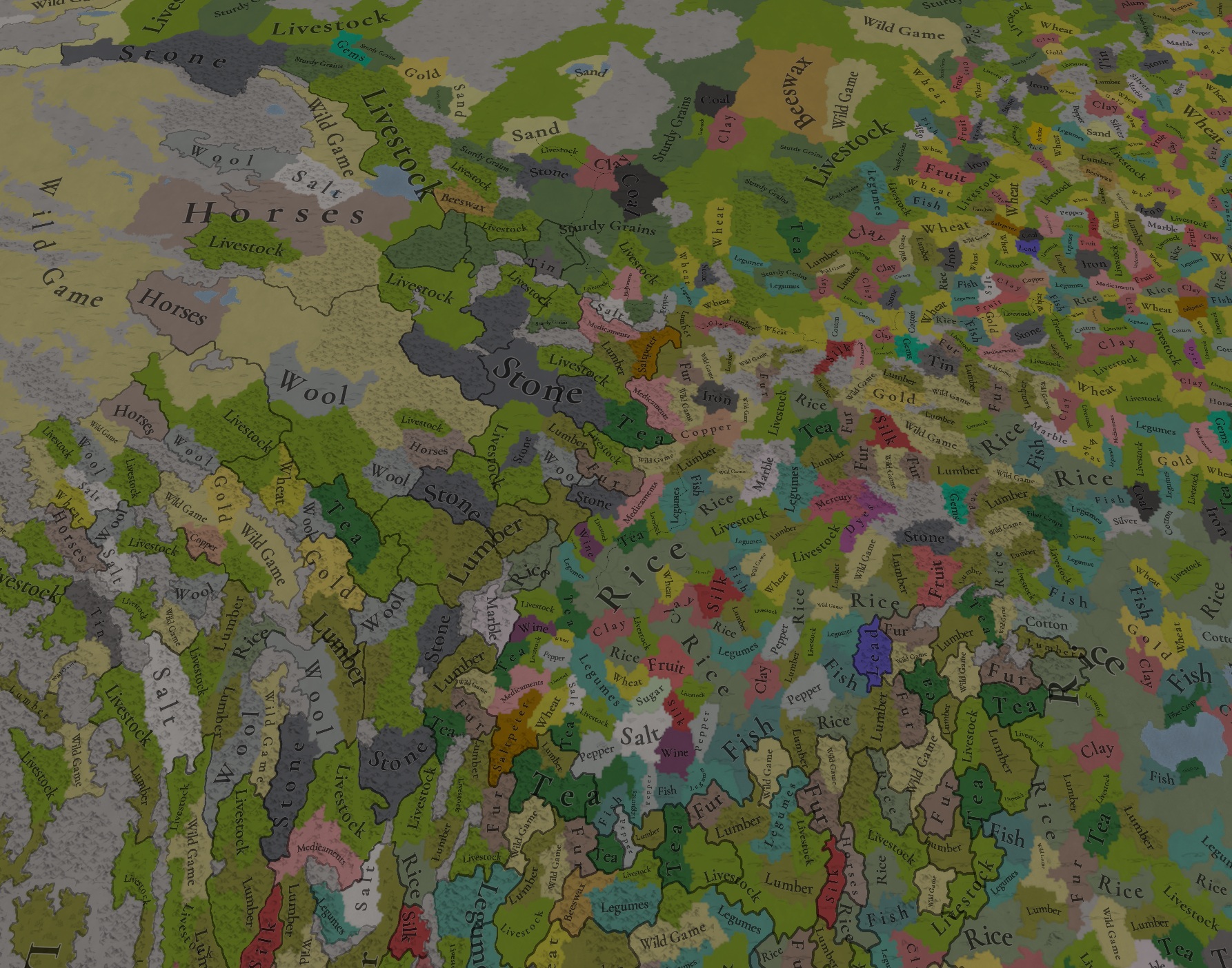
Markets:
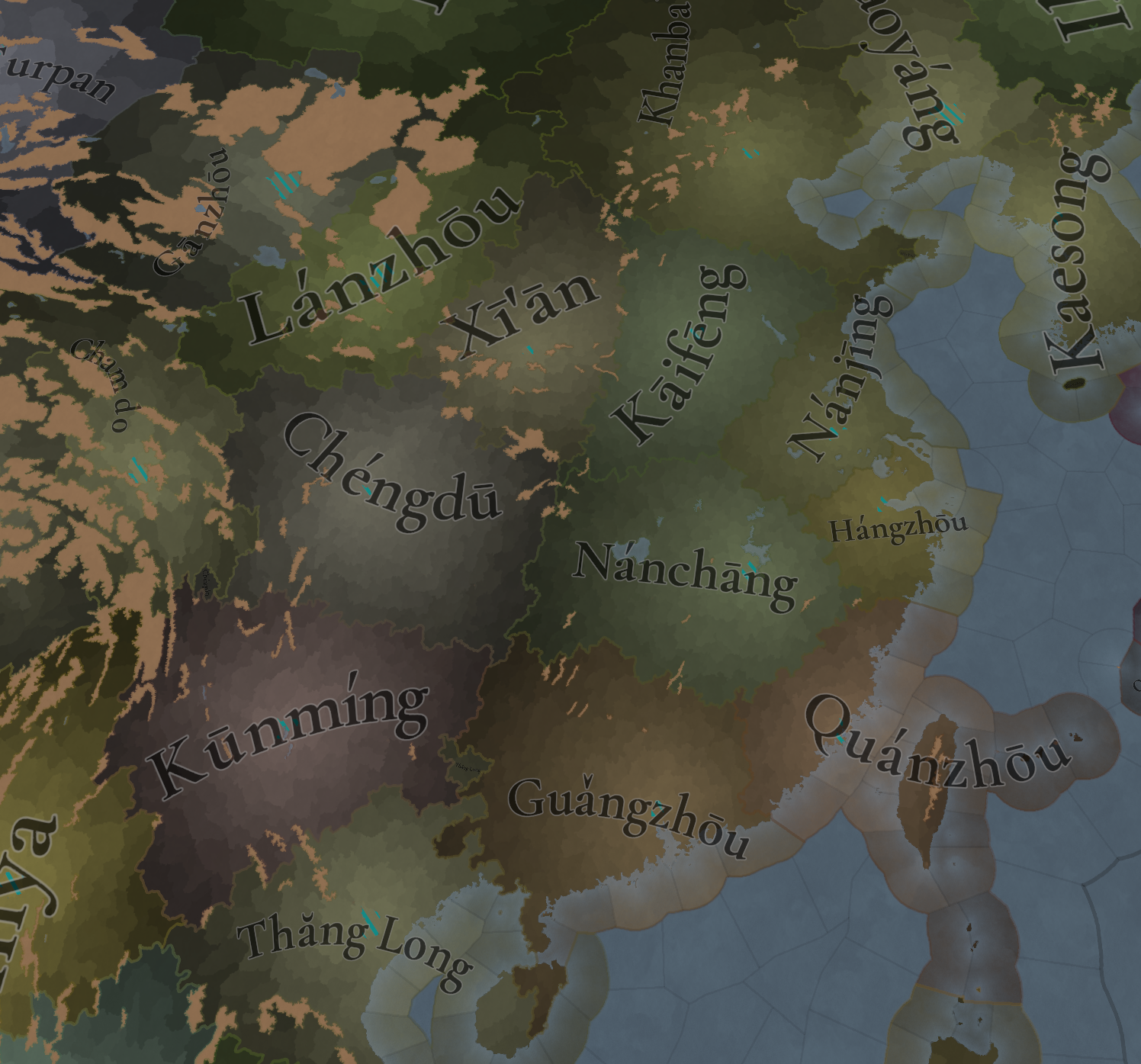
And that’s all for today! Remember that we have more China-related content planned for the rest of the week:
And always as a reminder: Wishlist Europa Universalis V now!
This area has received quite a bit of changes, although the locations themselves have not been touched that much. One change that we still have in the plans to do is to update all location names to use the names of the counties instead of the county seats, as, after the feedback we received, we agree that this is the best way to name locations in China. However, it’s a long list of names that we have to check and change, so it will take a while to do it all. To that effect, we would appreciate any help you can give us by providing lists of the current names of locations and the county name they should use instead. We are aware that there were already many suggestions for name changes in the first Tinto Maps, and we have them already bookmarked, but any further suggestions and feedback will be equally appreciated, and even more if ‘compilations’ of county names by provinces/areas are made.
Now, let’s look at what has changed:
ADDITIONS
Added the following:
Locations
Added the following:
- Locations
- Qídōng
- Dépíng
- Tángyì
- Cháochéng
- Geshitsa
- Kazhi
- Gurkyang
- Lakes
- Hala Nur
- Jūyán Sea
- Qīngtǔ Lake
- TAGs
- Möng Hkeng
- Möng Hten
- Möng Ting
- Möng Ngüm
- Möng Hsa
- Möng Wo
- Möng Ku
- Yuánjiāng
- Niuwu
- Níngyuǎnzhōu
- Nalou
- Yánjǐng
- Běishèng
- Yáo'ān
- Hèqìng
- Ānnán
- Āníng
- Mílè
- Jiànshuǐ
- Shípíng
- Níngzhōu
- Luóluósī
- Chāngzhōu
- Xianlong
- Wǔdìng
- Réndé
- Dōngchuān
- Gyelthang
- Yongning
- Tiānquán
- Muchi
- Wēimào
- Tsakho
- Sōngpān
- Lóngzhōu
- Mínzhōu
- Táozhōu
- Khagya
- Hézhōu
- Jīshízhōu
- Biri
- Renamed Chakla to Minyag
- Removed Ngapa
- Cultures
- Renamed Dōngběi to Yān
- Renamed Jiāoliáo to Jiāodōng
- Renamed Lányín to Liáng
- Renamed Hak-kâ to Kèjiā
- Renamed Xīnán to Shǔ
- Renamed Yuè to Yuèhǎi
- Renamed Miao to Hmong
- Renamed Mien to Yáo
- Added:
- Liáodōng
- Huáihǎi
- Qín
- Tàizhōu
- Chǔ
- Chángdé
- Yuè
- Xuānzhōu
- Wùzhōu
- Qúzhōu
- Chúzhōu
- Jiāngshān
- Táizhōu
- Ōuhǎi
- Túnxī
- Jìxī
- Qíwù
- Xīnxiāng
- Lǎoxiāng
- Xiāngxī
- Yǒngzhōu
- Héngzhōu
- Wǎxiāng
- Huìzhōu
- Dōngjiāng
- Fúzhōu
- Fúníng
- Mánjiǎng
- Xīnghuà
- Mǐnnán
- Cháozhōu
- Fúlǎo
- Léizhōu
- Qióng
- Cūnhuà
- Jiànníng
- Xīnhuì
- Málǎo
- Huàzhōu
- Gāozhōu
- Wúchuān
- Yángjiāng
- Guǎngxìn
- Tǔbái
- Yùlín
- Dānzhōu
- Mài
- Guìběi
- Guìnán
- Bo
- Gyalrong
- Baima
- Languages
- Renamed Chinese to Mandarin
- Added:
- Chinese language family
- Classical Chinese
- Shǔ
- Xiāng
- Gàn
- Píng
- Yuè
- Mǐn
- Wú
- Huīzhōu
- Kèjiā
- Jìn
- Northern Mandarin dialect
- Southern Mandarin dialect
- Qiangic
- Religions:
- Split Mahāyāna into Eastern Buddhism, Tibetan Buddhism, and Sānjiào
- Dynamic names
- Added dynamic character names for all Chinese languages
Locations
- Reworked some wastelands
- Adjusted some location shapes
- Adjusted the Chinese coast according to feedback
- Changed several Raw Goods as suggested
- Total Review
- Adjusted minorities with the newly added cultures
Countries:


Quite a lot more to see here compared to the previous iteration. As you can see, we have added the Tusi states, which is a new type of subject, in the border towards Yunnan.


Dynasties:





As I said, not much substantial changes here, but some small touches here and there.






Provinces:


Areas:





There are some pending adjustments towards making the division between the ‘core’ China region and the northern provinces less steep; we’re holding them a bit, until we complete the final regional division divide (which will be soon).


China had quite a bit of cultures before the review, now it has quite a bit more, also with plenty of minorities…


Location languages

Location dialects

Country languages (the Mongolian name is not visible in main China due to it being spread all over up to the Golden Horde)

Court Languages. Mandarin is also the court language of all direct vassals of Yuán, while those using other languages are vassals of vassals.

Liturgical Languages. Yuán starts following Tibetan Buddhism, so it uses Tibetan Language, but Eastern Buddhism as well as Sānjiào are set to use Classical Chinese.
Religion:

Raw Materials:





Markets:

- Wednesday -> Tinto Talks about the mechanics for the Middle Kingdom, the Chinese Empire IO!
- Friday -> Tinto Flavour about China
And always as a reminder: Wishlist Europa Universalis V now!
- 77
- 24
- 6
- 3
- 1

